Fairhaven began life in 1892 as a 12-hole course in dunes beside the sea and Fairhaven Lake. The club itself came into being in 1895. But its proximity to the sea and encroachment from developers forced a move inland to Lytham Hall Park in 1924. A new, capacious clubhouse followed in 1925.
The site is really only a stone’s throw from the far end of Royal Lytham’s course but there the similarity ends. While Royal Lytham is a true links, despite being girt about with housing and a railway, Fairhaven is parkland. However, the drainage is excellent with fast running fairways and the bunkering no less penal than at its illustrious neighbour. In fact the first thing you notice from the club house balcony with its panoramic view of the course is the number and severity of the bunkers awaiting on the first hole. There will be little respite thereafter.
Credit for the design of the course goes to JA Steer, professional at Blackpool Golf Club (and, later, Lytham Green Drive), and James Braid. On such a flat site a good deal of earth was moved, not only to create the bunkers but also to shape greens, incorporate mounds and hollows and give the course a fairly consistent architectural style. Steer returned in 1931 to make alterations. The raised profile of the bunkers is assigned to Dave Thomas, whose 1977 alterations also included a general tightening up of the course defences, reshaping of some greens and the planting of rhododendrons and spinneys. Thankfully the plantings have not swamped the course and its design. There is still a good sense of golfing in a wide open space. Current developments follow a 2003 report by Donald Steel, one of the consequences of which is that the course planner of 2010 is already slightly out of date and some bunkers have disappeared while new ones have sprung up. Although the general orientation of the site is north-south, the layout is cleverly routed so that the wind must be tackled from every quarter.
The course is a regular host of final qualifying when the Open Championship is staged at Royal Lytham. Having tangled with a great number of Fairhaven’s hazards it is salutary to study the card of Justin Leonard’s course record of 64 displayed in the upstairs bar. At full stretch the blue course measures over 7,000 yards to a par of 72. On the white and yellow courses the 11th is rated as a par five, rather than a 4, giving a par of 73 for 6,787 and 6,562 yards respectively. I quote the yardages from the white tees.
1. 518 yards par 5
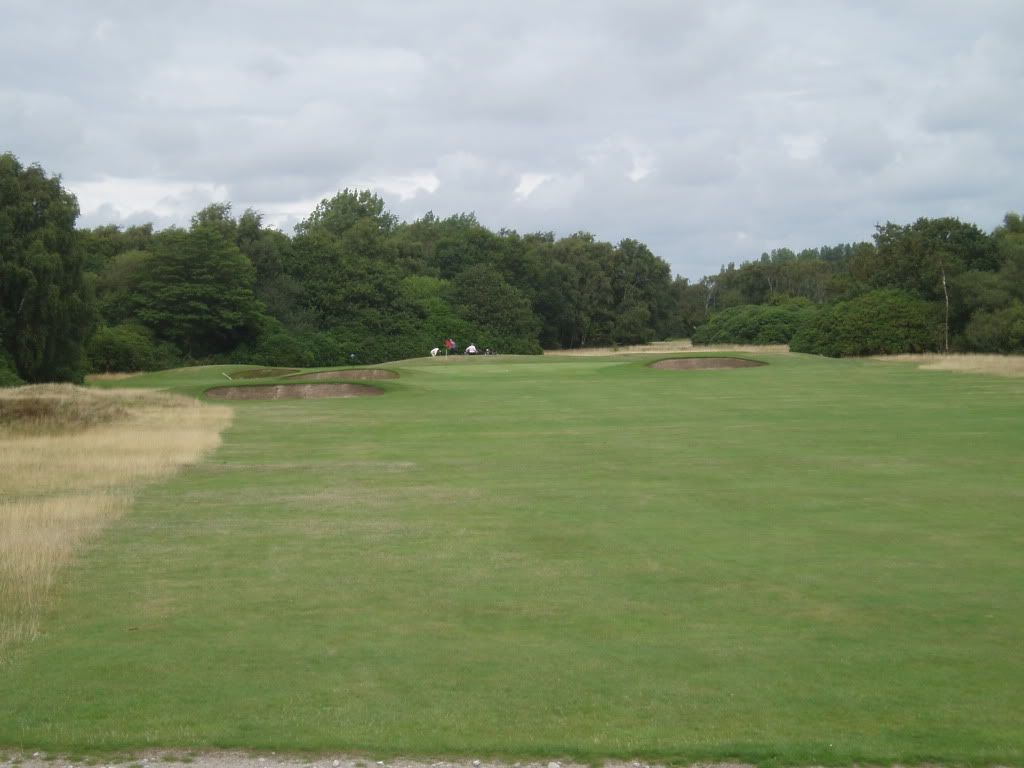
Absolute straightness is required on each shot with seriously deep bunkers eating into the fairway for the entire length of the fairway. This is the run in to the green. Note the attractive rough grass which is thin and wispy giving a good chance of finding the ball if the shot has been only a little inaccurate and also a good chance of getting a club to the ball reasonably cleanly.
2. 185 yards par 3
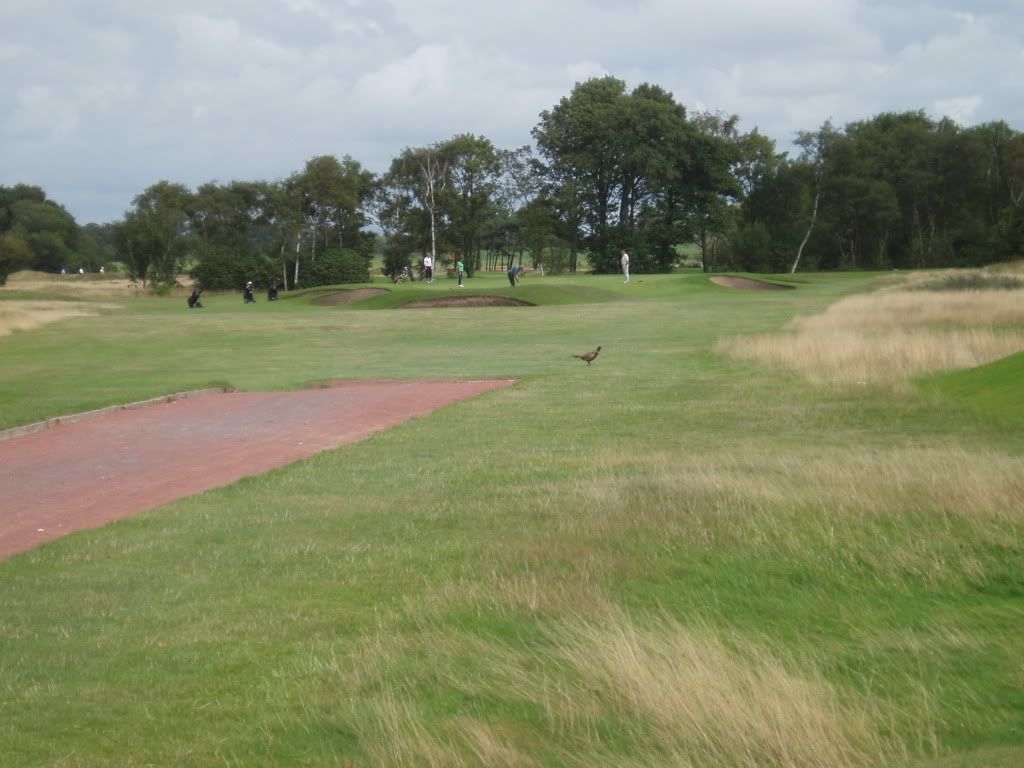
A pheasant crosses our route to the 2nd. This was originally a big country estate and pheasant are only one of a wide variety of species to be found here, Admirably, there is a book in the clubhouse in which members can record unusual visitors to the course in the way of natural history.
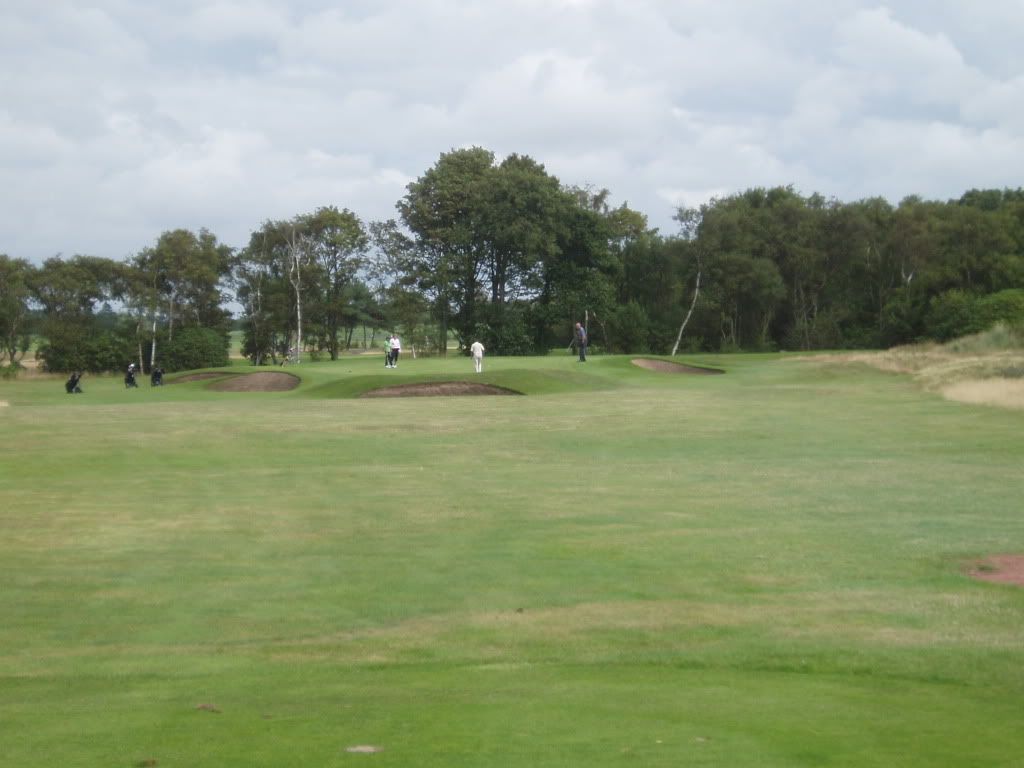
A closer look at the hole.
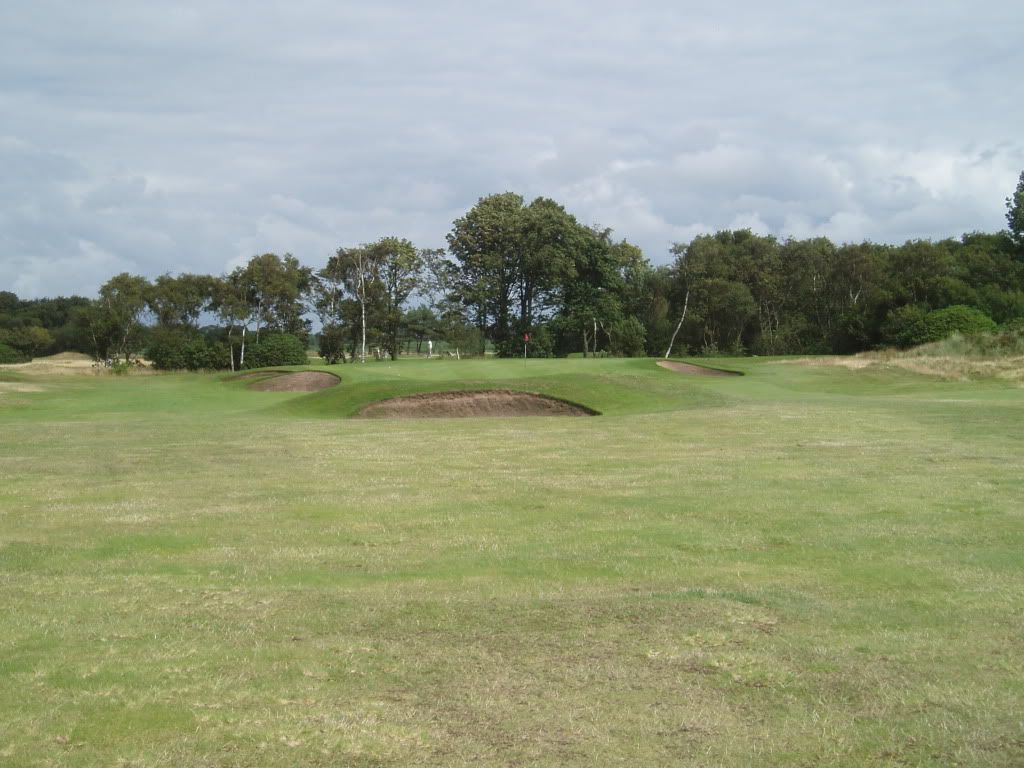
As we approach the green it becomes more apparent that there is plenty of room to land the ball over the green-front bunker, allowing the ball to run onto the green in typical seaside fashion.
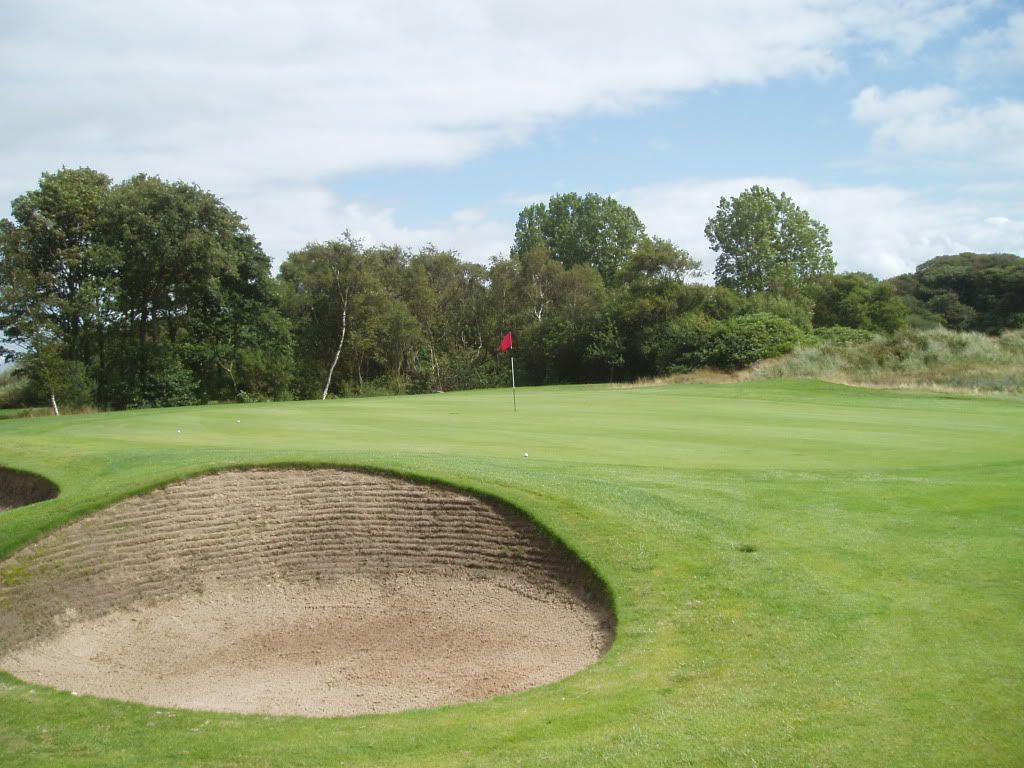
This is typical of Fairhaven bunkers, deep and precisely revetted. The low sun as we completed our round emphasised their clean-cut outlines.
3. 506 yards par 5.
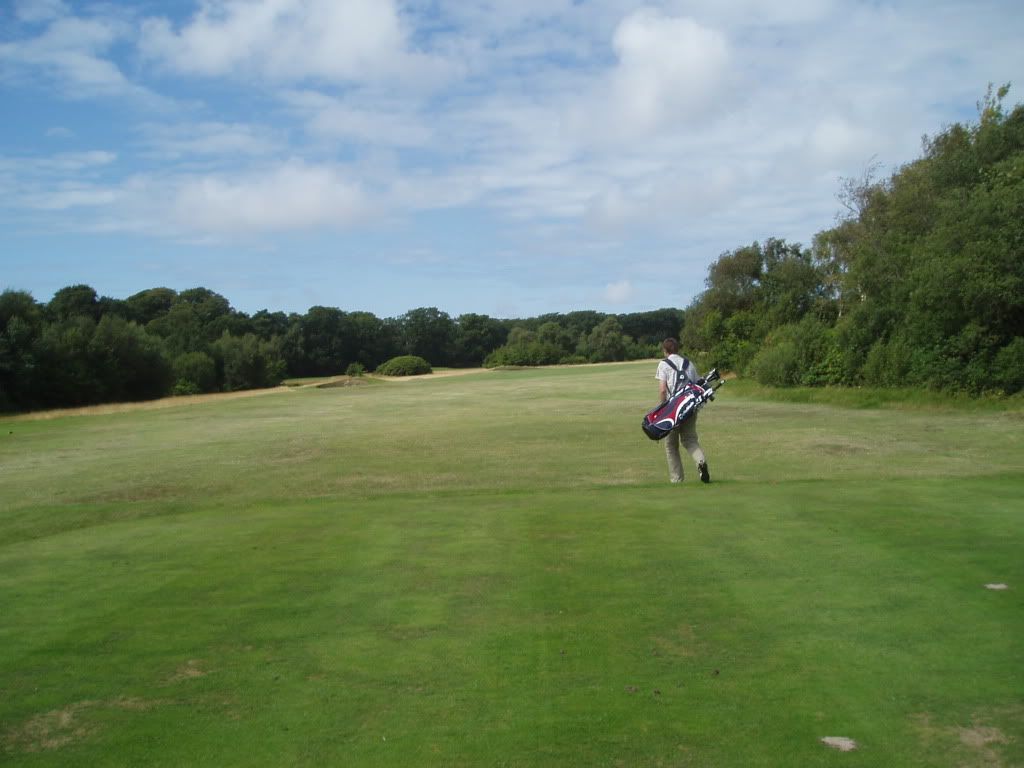
Somewhat more inland in feel, with trees and bushes on the right of the tee, forcing many drives out to the left, effectively putting the green out of range for the birdie seeker on this right-hand dog-leg.
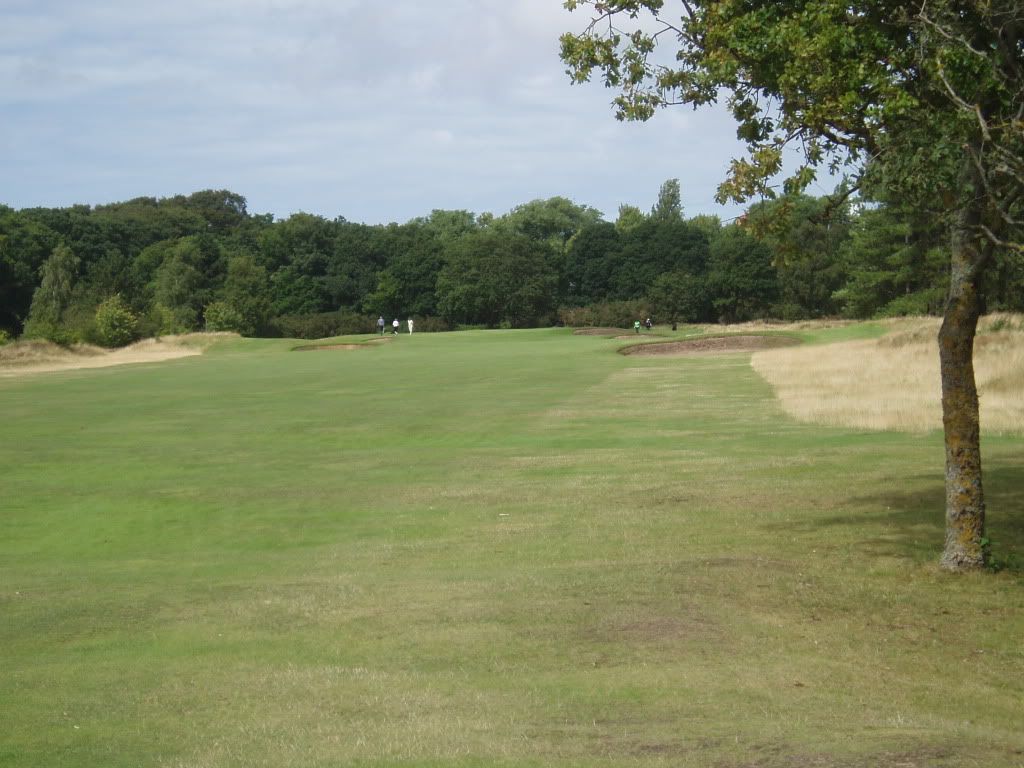
In an ideal world a good drive would finish a little to the left of this tree to leave an unfettered shot at the green some 230 yards away, the fairway just bending slightly to the left towards the end.
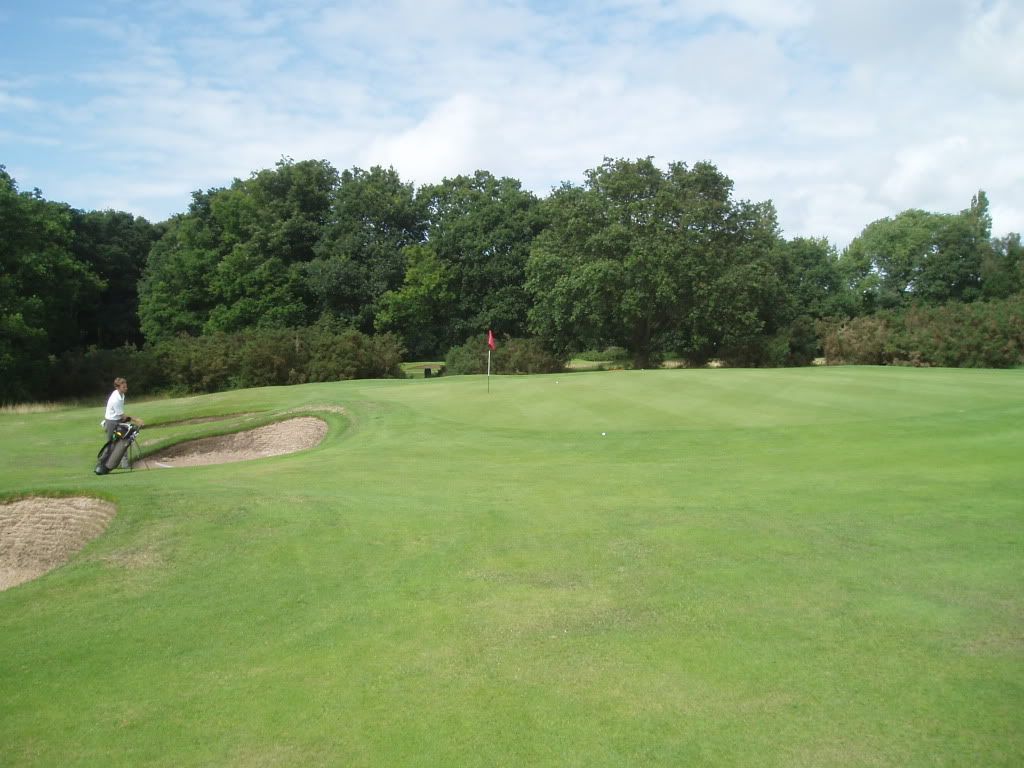
Flat the course may be, but there is usually sufficient elevation to the greens to repel any shot the slightest bit deviant. Nor are the putting surfaces expansive.
4. 443 yards par 4.
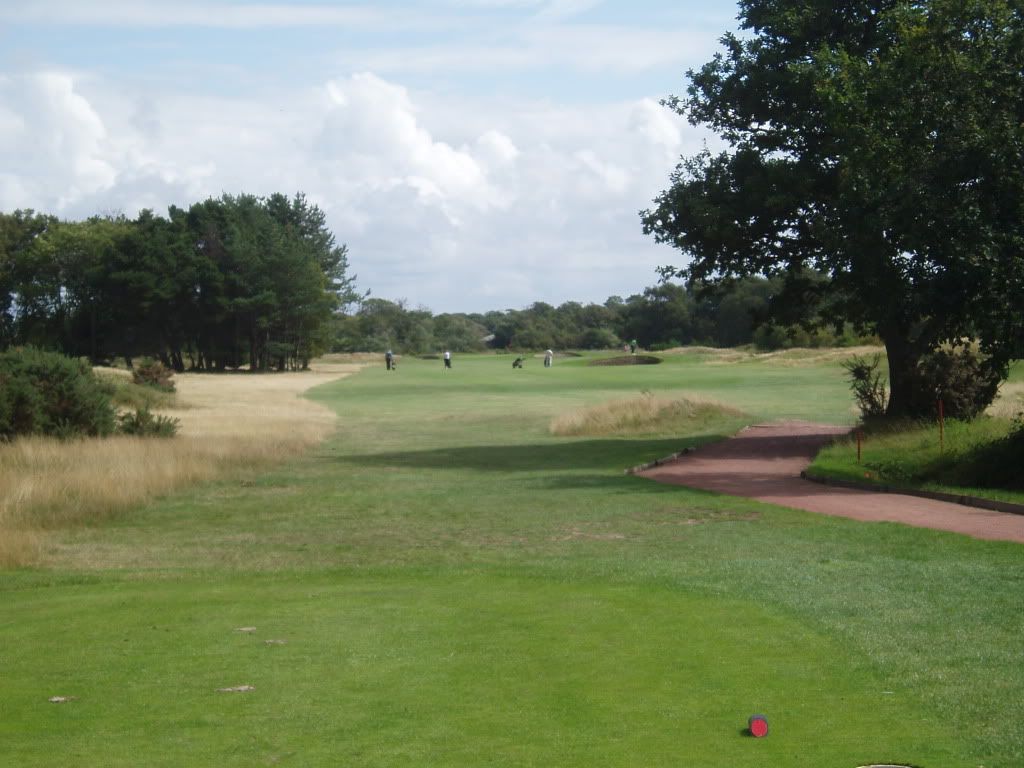
A strong par four with prominent bunkers to the right of the fairway at about 230 and 265 yards and a spinney on the left at a similar distance. There is little to restrict big hitters who can easily clear those distractions.
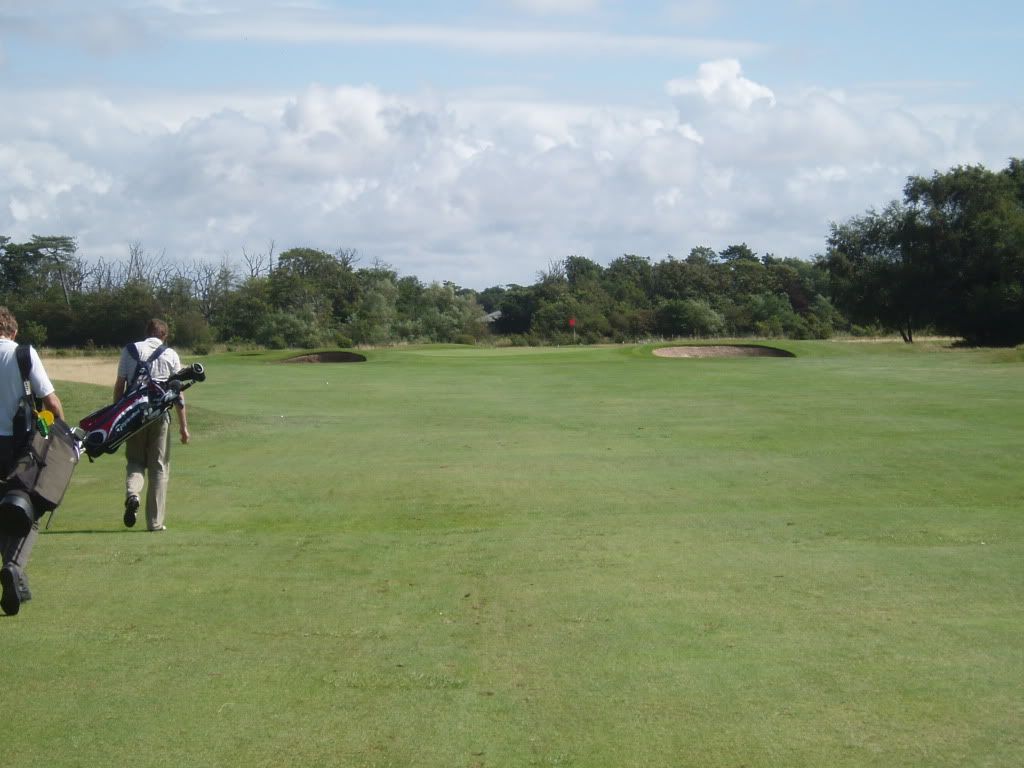
My son, Edward, the front of these two, was a case in point hitting his drive 340 yards, leaving only an absurdly short wedge. Why his head should be hanging like that I cannot say.
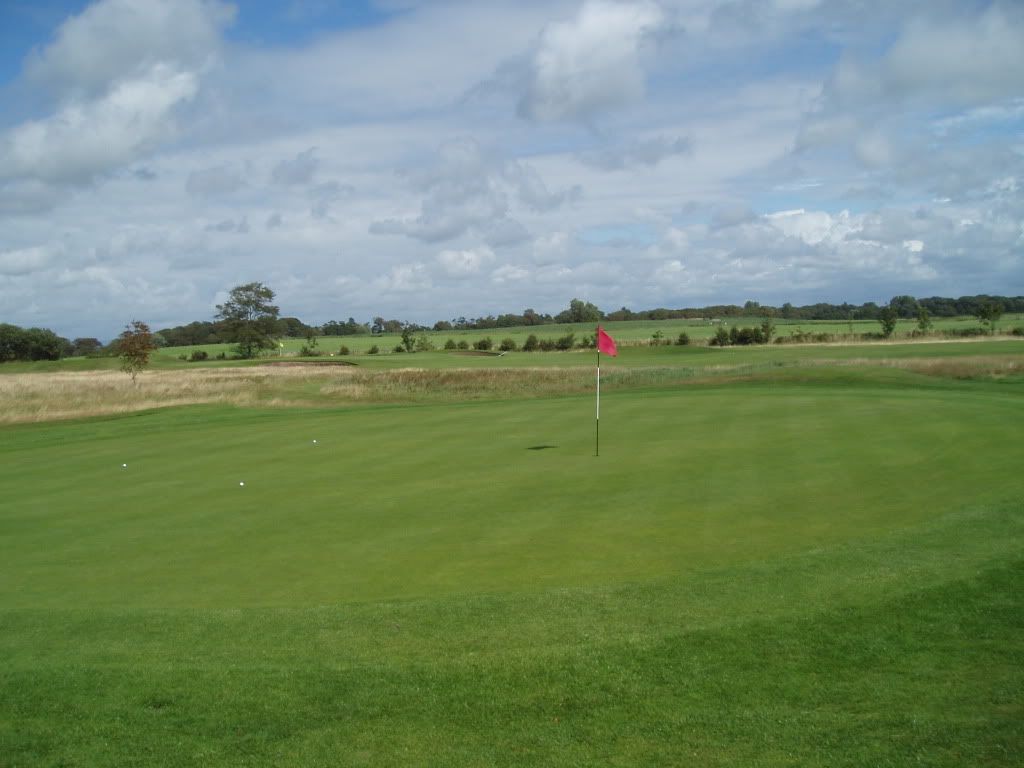
The delightful view from the green across the 12th fairway reminds that you are inland, despite being only a couple of miles from the sea.
5. 185 yards par 3
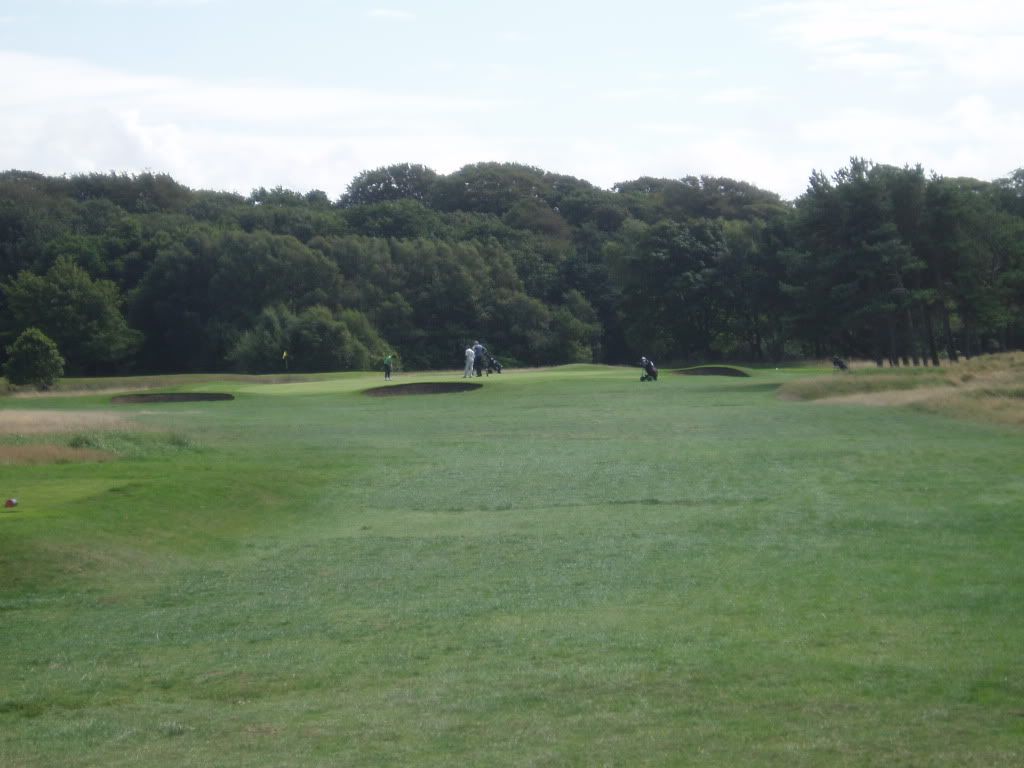
With a very strong right-to-left wind this hole proved a bit of a handful. Two bunkers on the straight line should be cleared easily enough – they are some way short of the green. The difficulty was making enough allowance for the wind, having to aim absurdly wide.
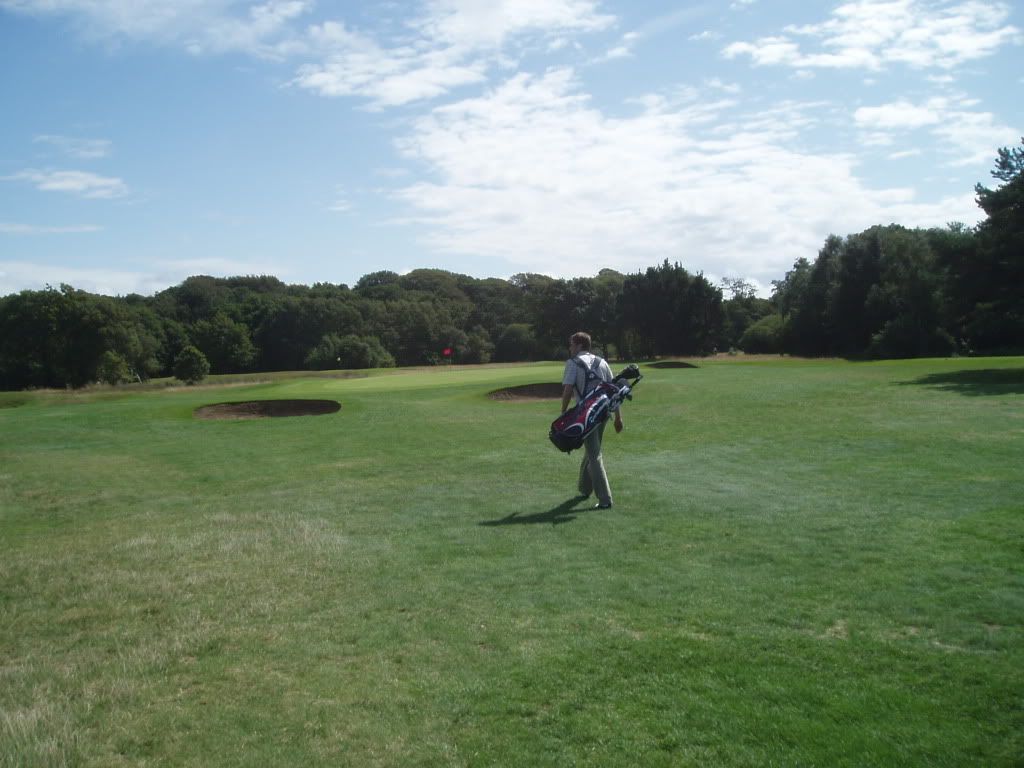
6. 373 yards par 4
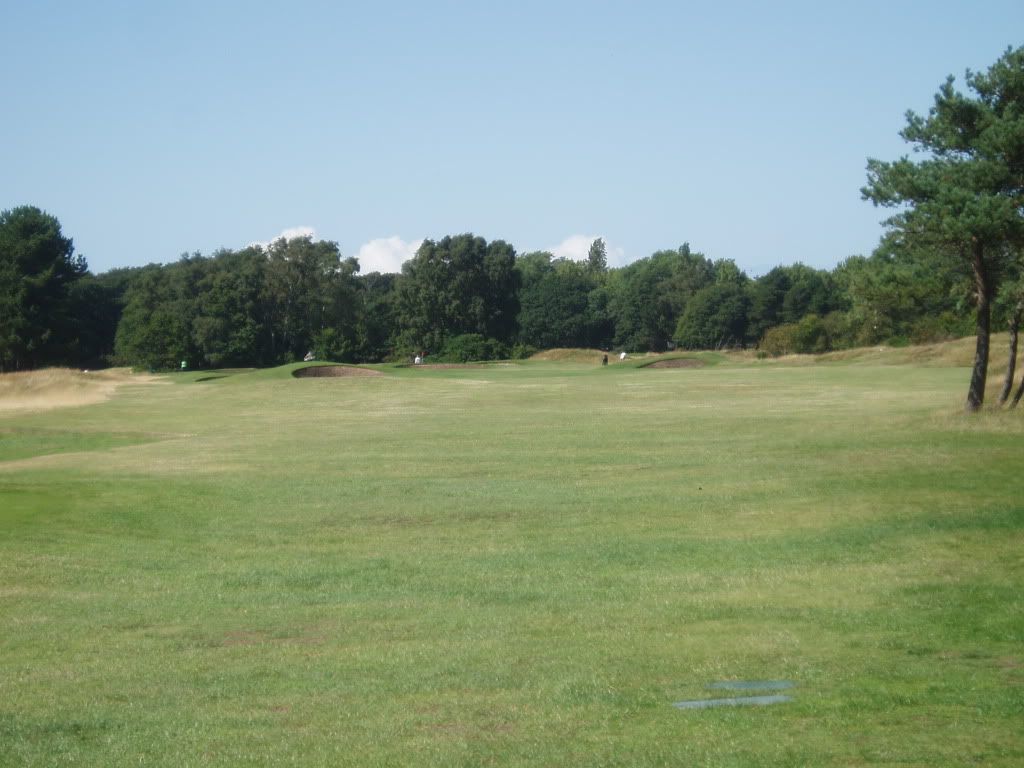
What you are asked to do is clear enough from the tee. Just get the ball between or beyond those bunkers which really narrow the fairway.
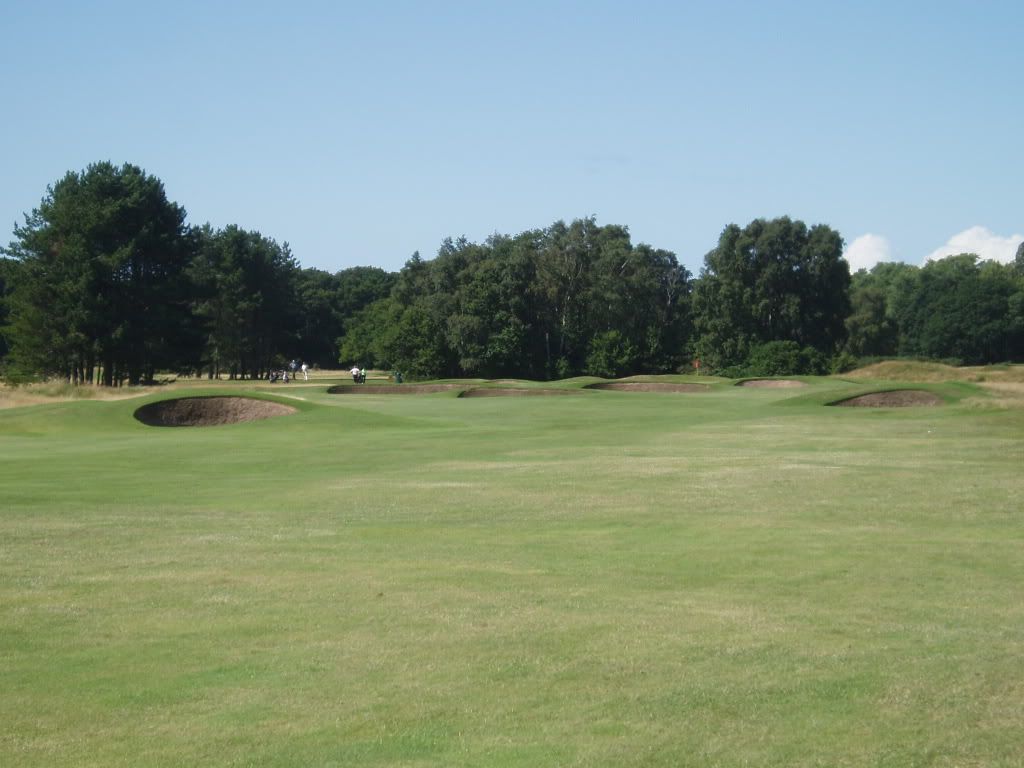
Here they are again, plus the wall of three cross bunkers 45 yards beyond.
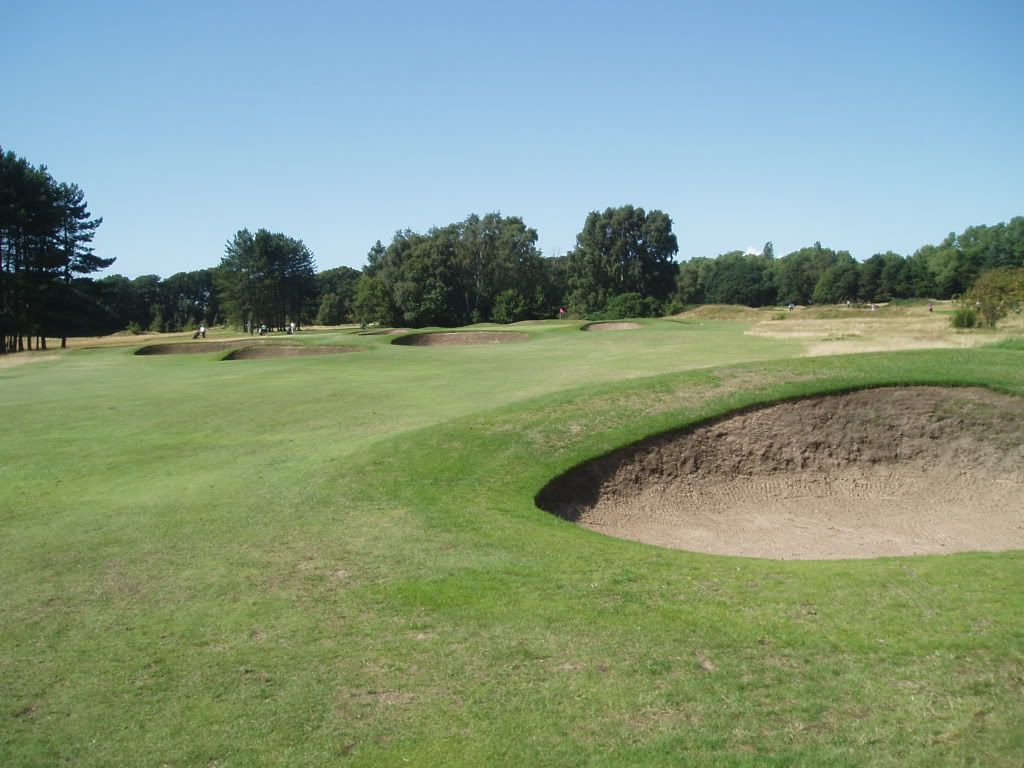
The cross bunkers are about 50 yards short of the putting surface but they prey on the mind of a high-handicapper. They did!
7. 351 yards par 4
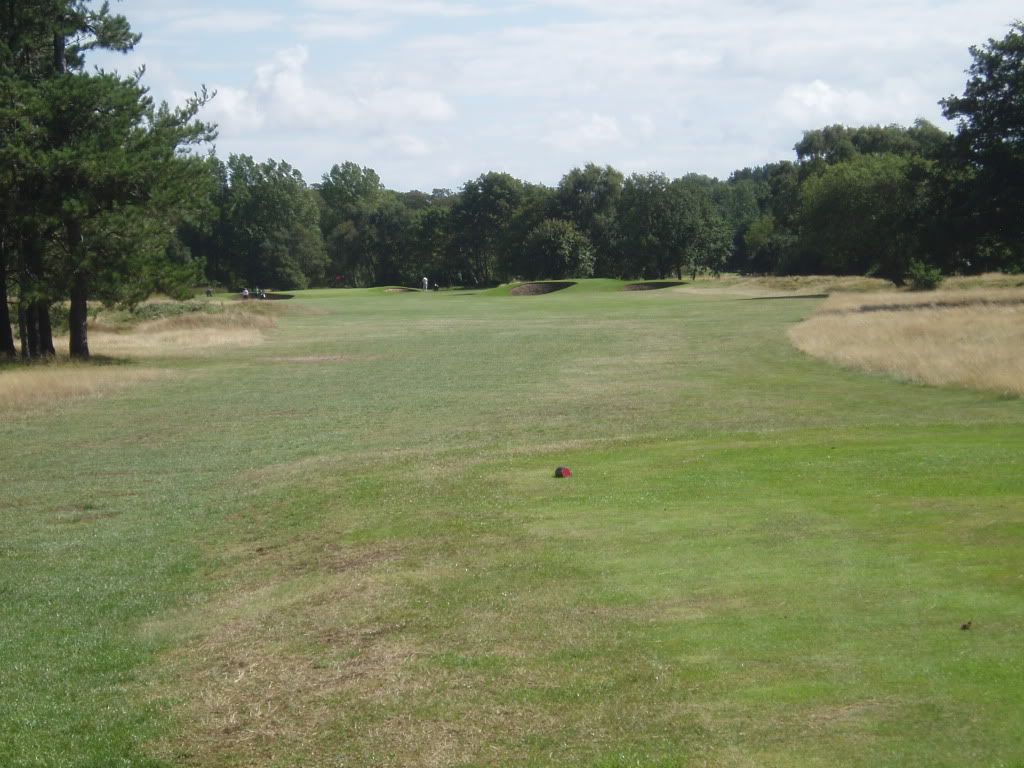
Once again, deep bunkers set into moundwork catch the eye from the tee. They are about 260-270 yards out from the blue tee, the hole playing some twenty yards longer from there. So they are of concern to lesser mortals playing from the white or yellow tees.
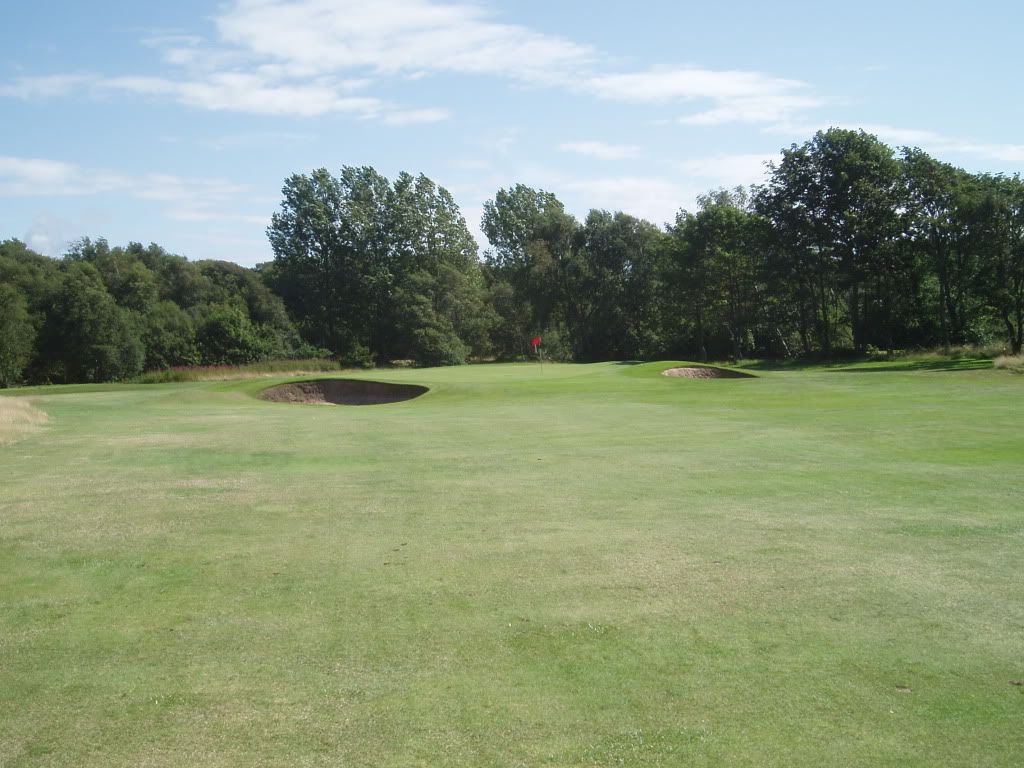
Another typical Fairhaven green awaits, raised just enough to present problems to those trying to run their approach shots in or to those who fall off at the back or sides. None of the greens is big but, at 30 yards, this is the deepest on the outward half.
8. 393 yards par 4.
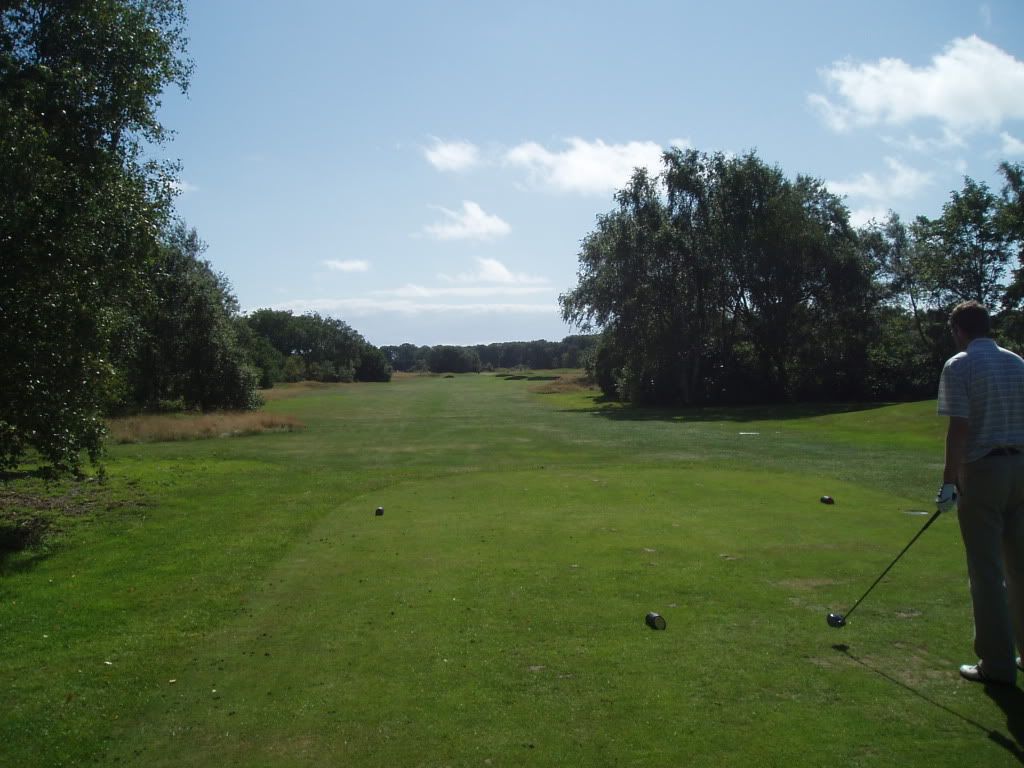
This drive feels tight with, yet again, two bunkers on the right at the same length as trees on the left.
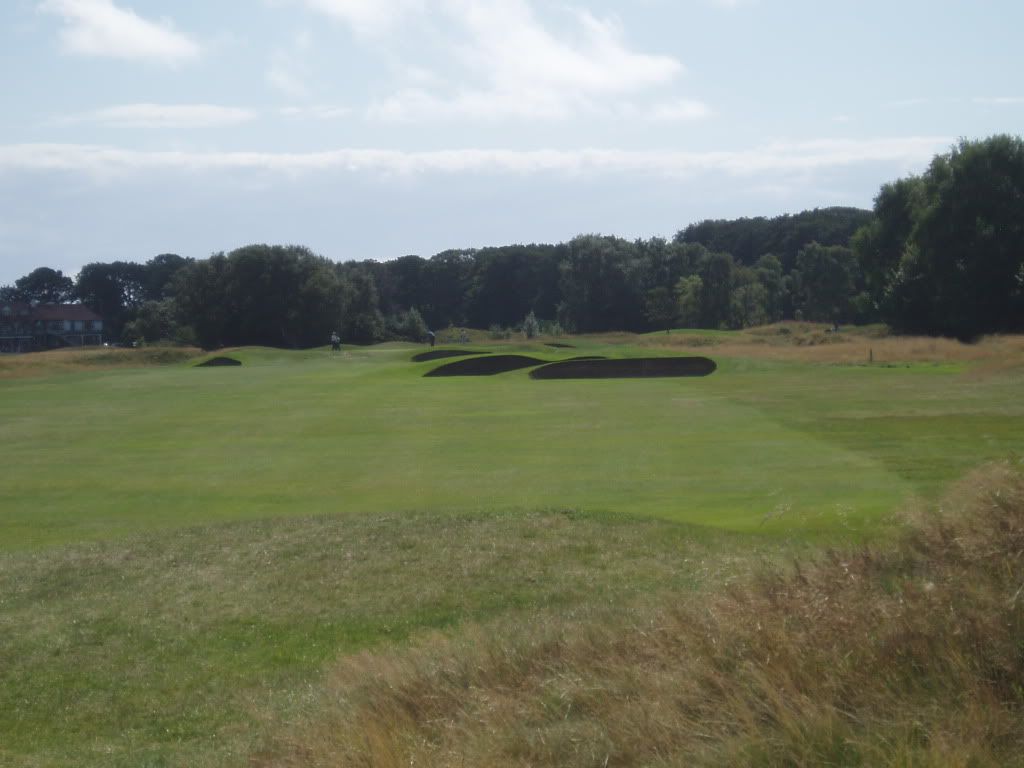
The run out into those further bunkers, set in a ridge, is about 320 yards from the tee, so big hitters easily making it past the first two bunkers must not go too far. However, as the hole plays into the prevailing wind, the problem for us high-handicappers is whether or not our second shots will make it past those distant bunkers into the wind.
9. 360 yards par 4.

A feature of many of the multiple bunkers at Fairhaven is the way they have been set on the diagonal. On this hole the driving bunkers run from 4 o’clock to 10 o’clock. The protective bunkers in front of the green run 8 o’clock to 2 o’clock.
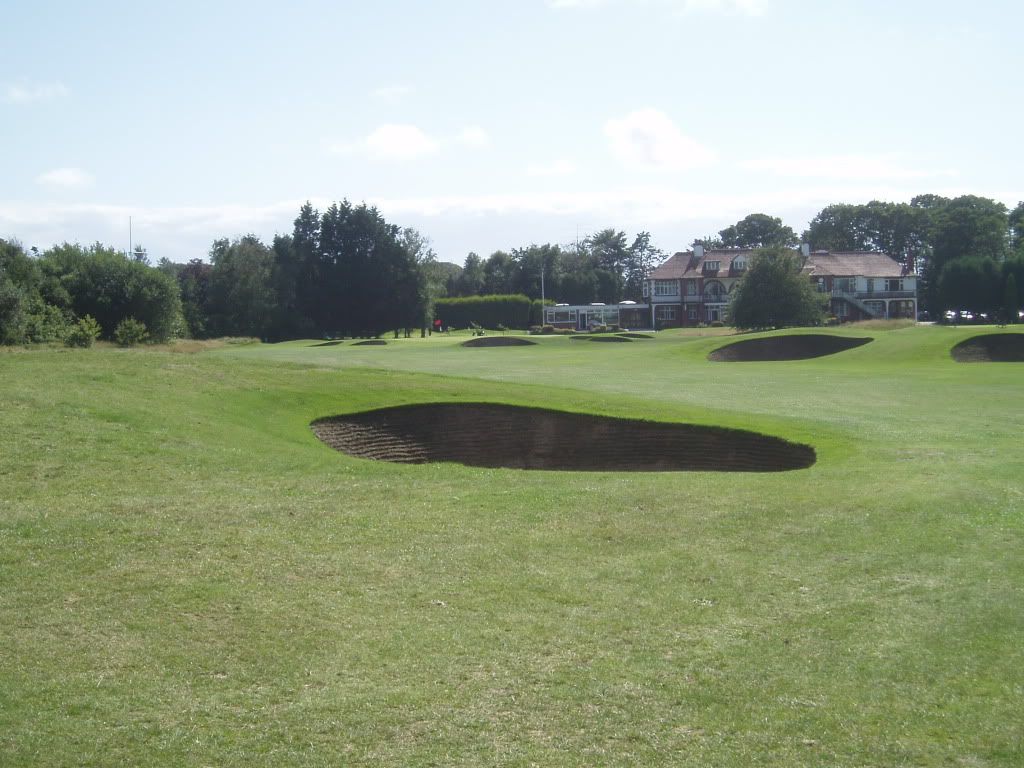
The style and maintenance of the bunkers gives them a big impact.
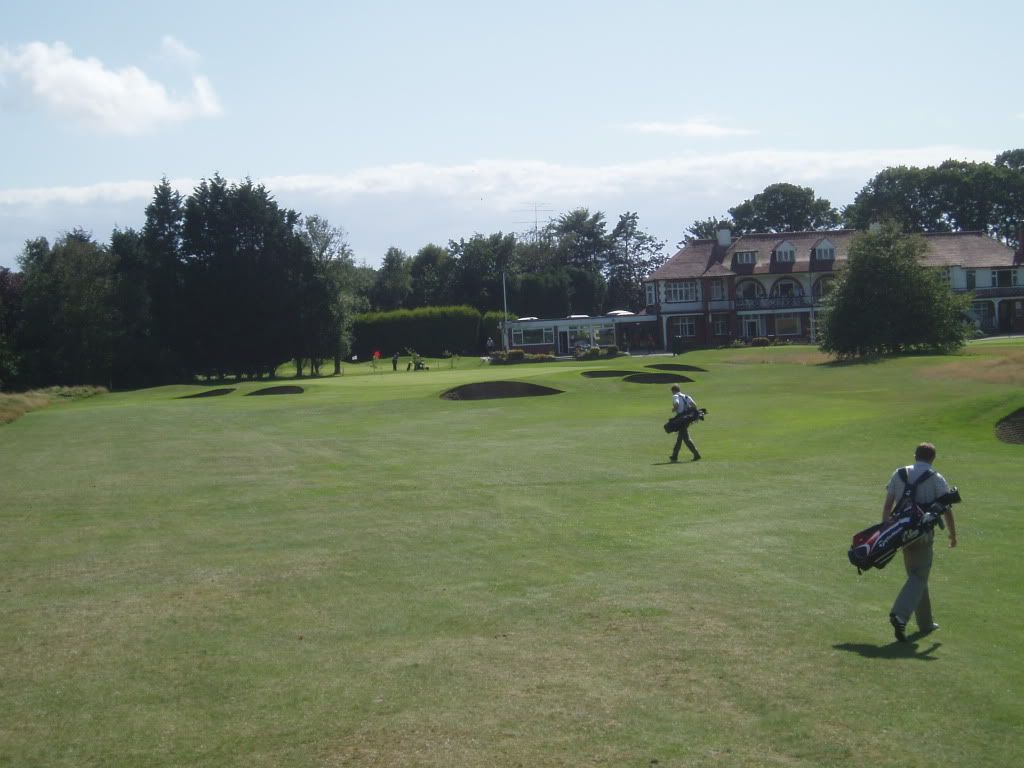
You never see professionals zig-zagging from side to side across the fairways! The routing brings us back in front of the clubhouse, to give two convenient starting points. Another admirable feature of the layout is that space has been made available for a good short game practice area right next to the professional’s shop, from which buckets of practice balls are also available with the range ideally near to hand.
10. 205 yards par 3
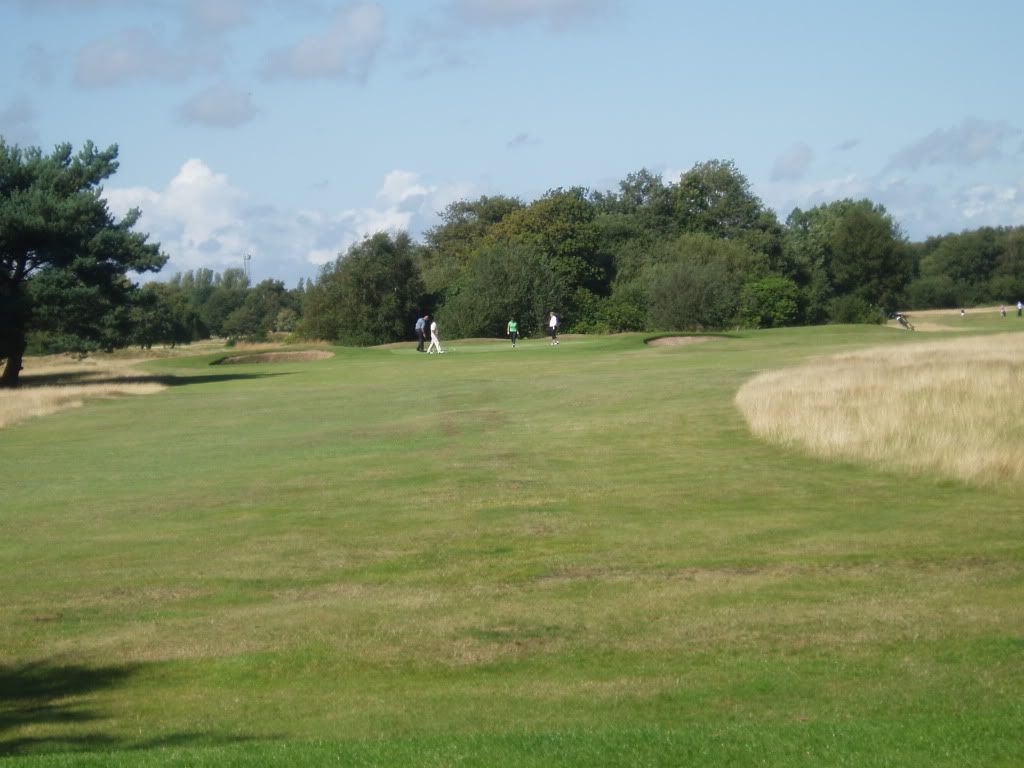
A fairly straightforward hole with a teeing ground 62 yards long, giving considerable variation in the possible length of the hole. It is 217 yards long from the blue tees.
11. 499 yards par 5
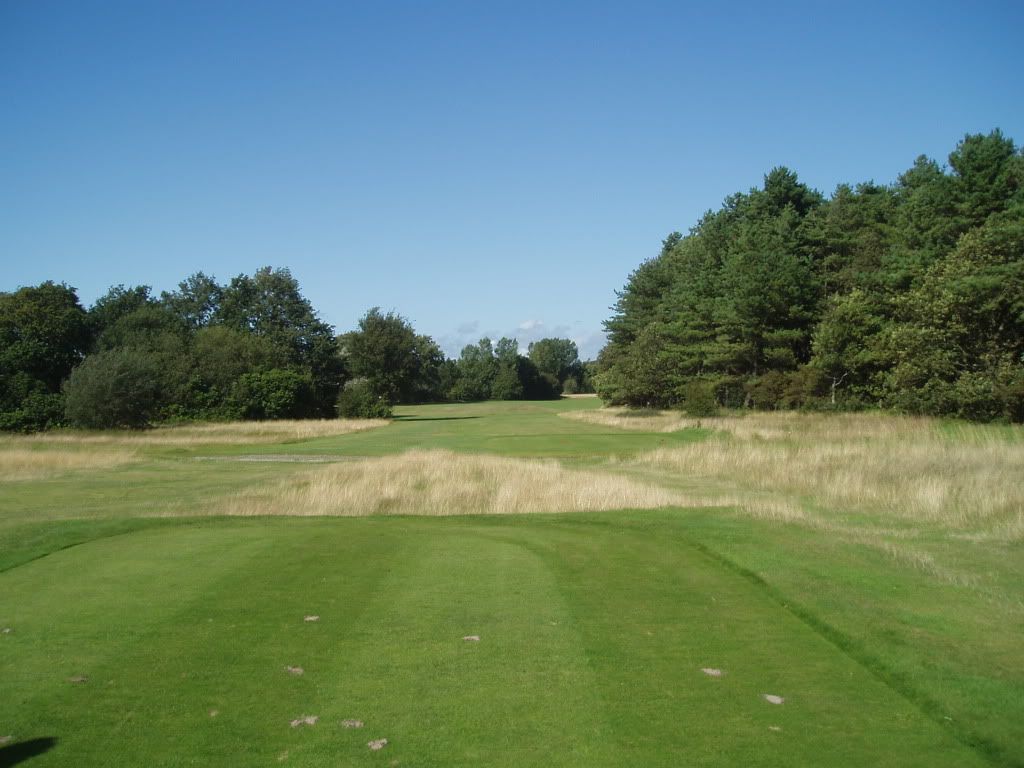
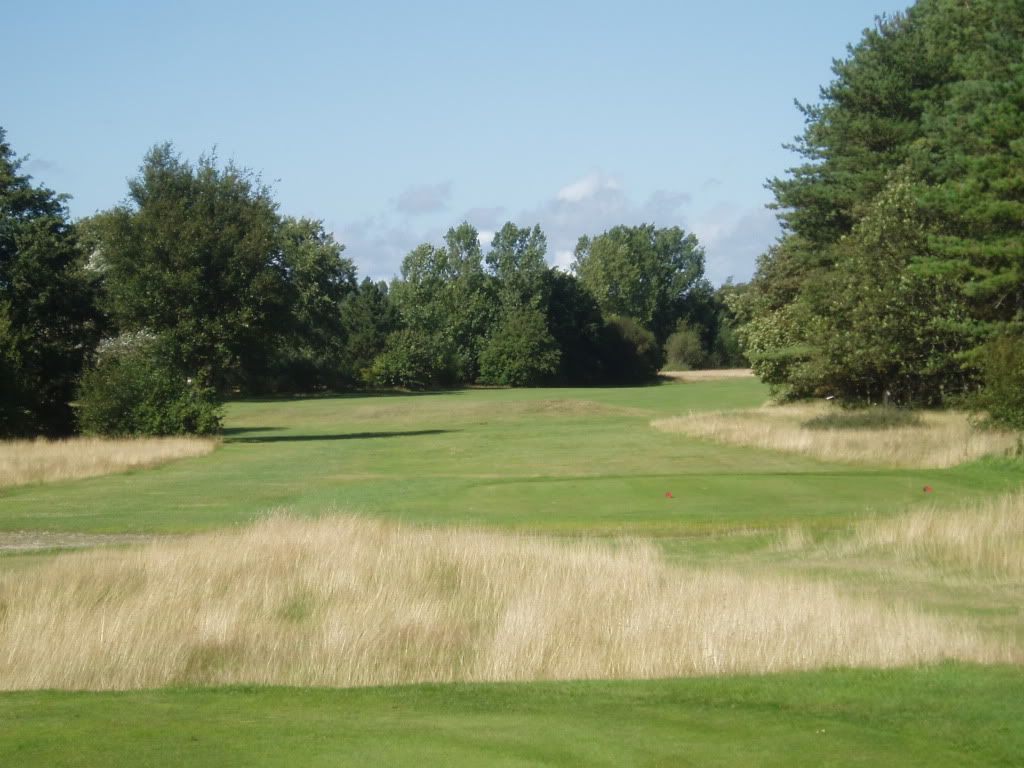
This hole plays as a 496-yard par four from the championship tee, making stern demands on the tee shot with the fairway curving to the right over the first 300 yards or so, with out of bounds in front of the trees on the right and spinneys on the left.
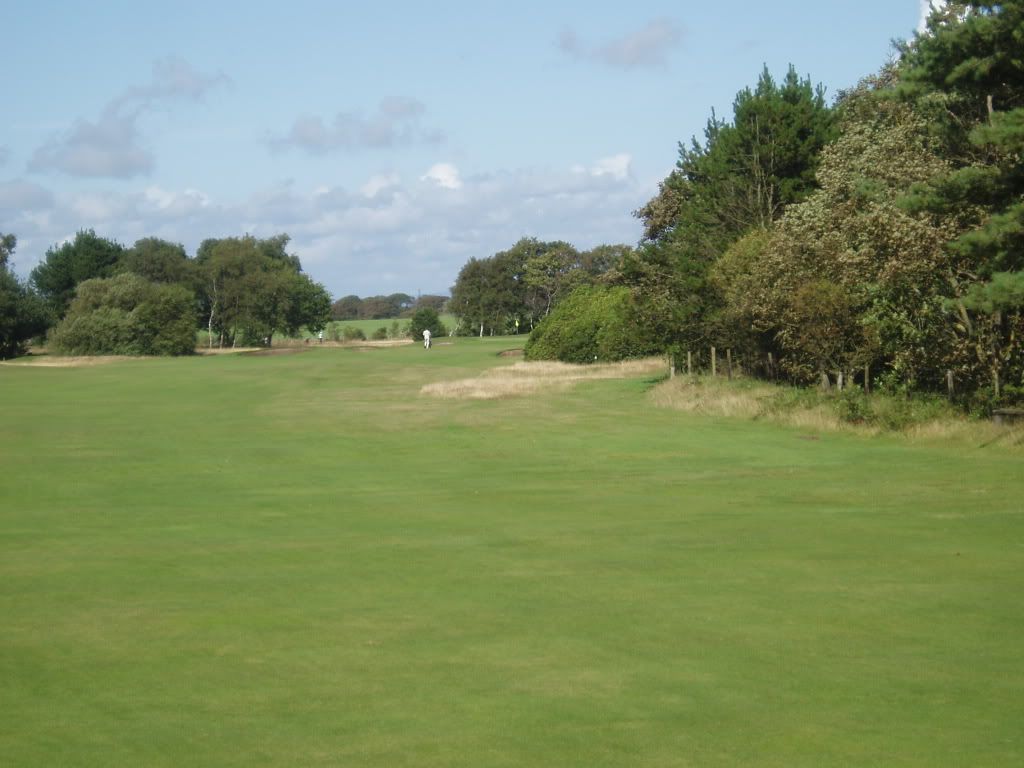
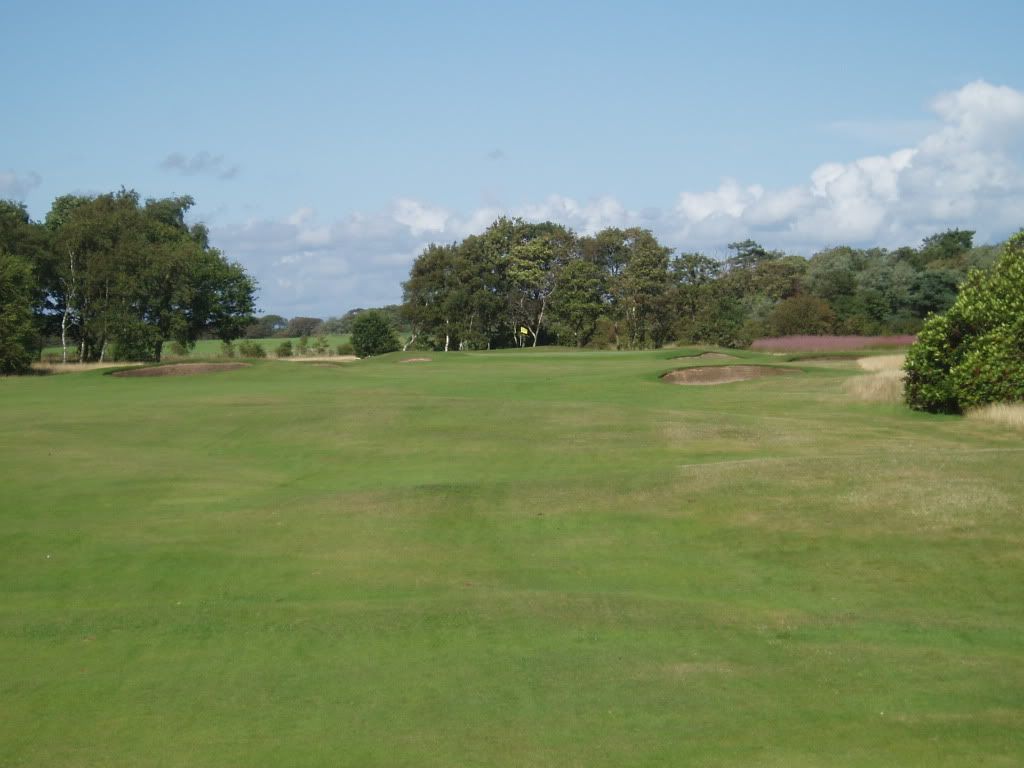
The bend gradually unfolds.
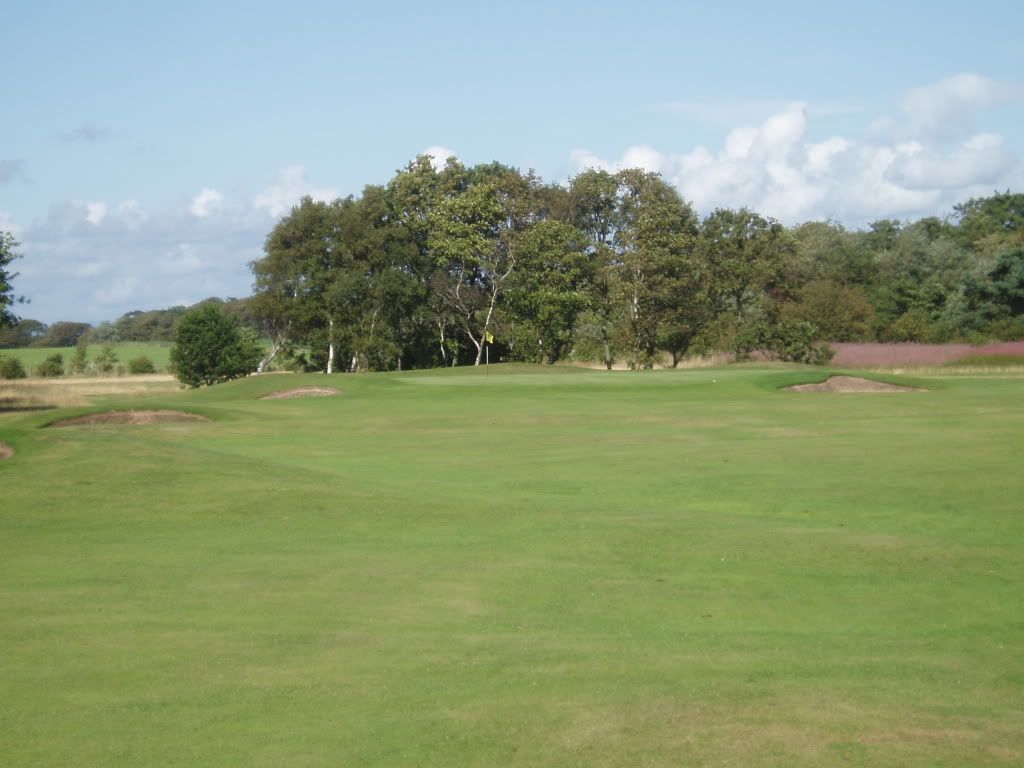
Another gently raised green, and at 31 yards the joint deepest putting surface on the course.
12. 381 yards par 4
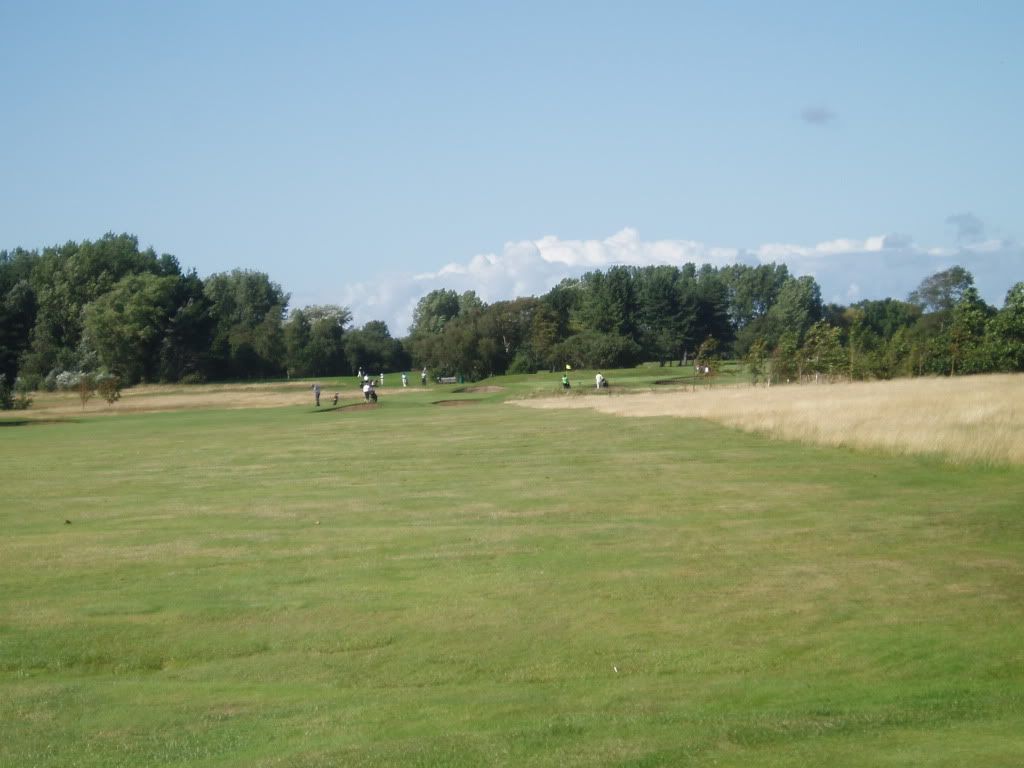
We are now on the eastern edge of the property running alongside farmland. The nature of the course changes for the next three holes.
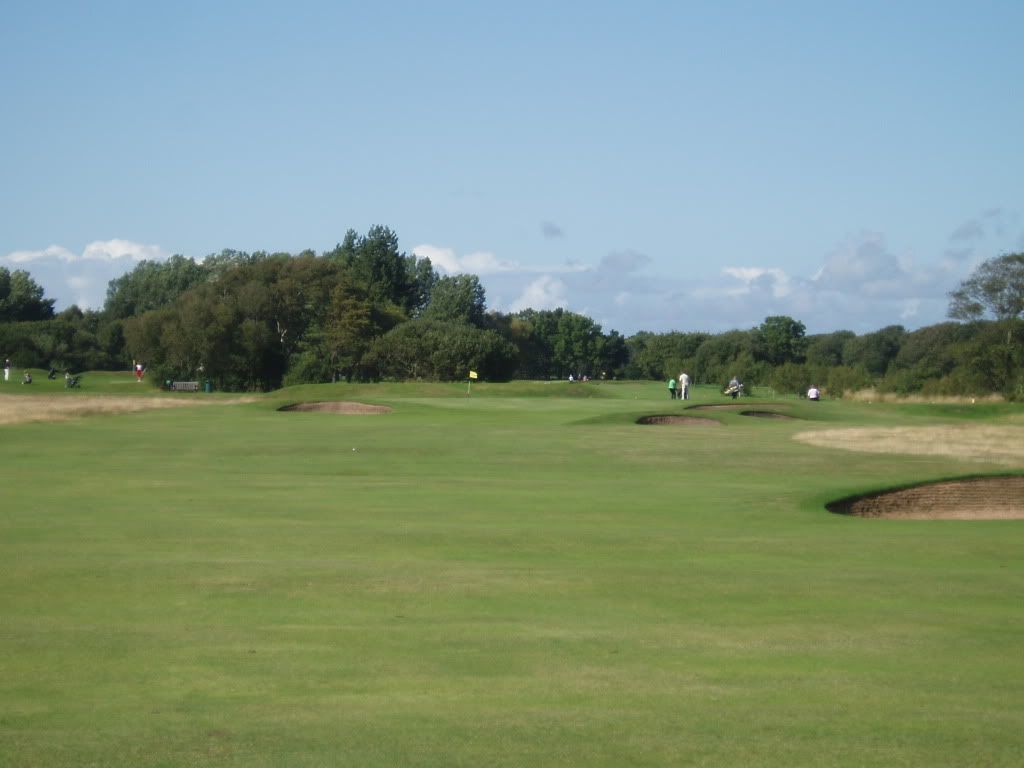
The fairway is a left-to-right dog leg, but the green is angled slightly from right to left.
13. 381 yards par 4.
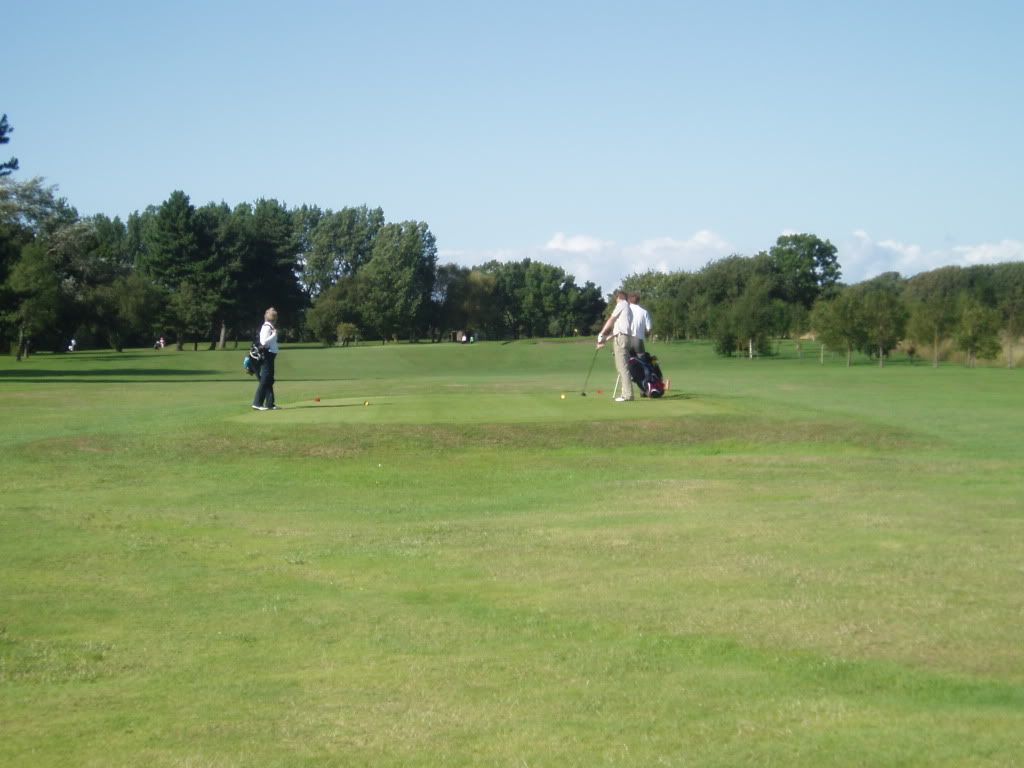
The yellow tee is 40 yards in front of the blue and white tees. This is a hole of similar length and shape to the previous hole, except that this hole climbs slightly – for the only time in the round.
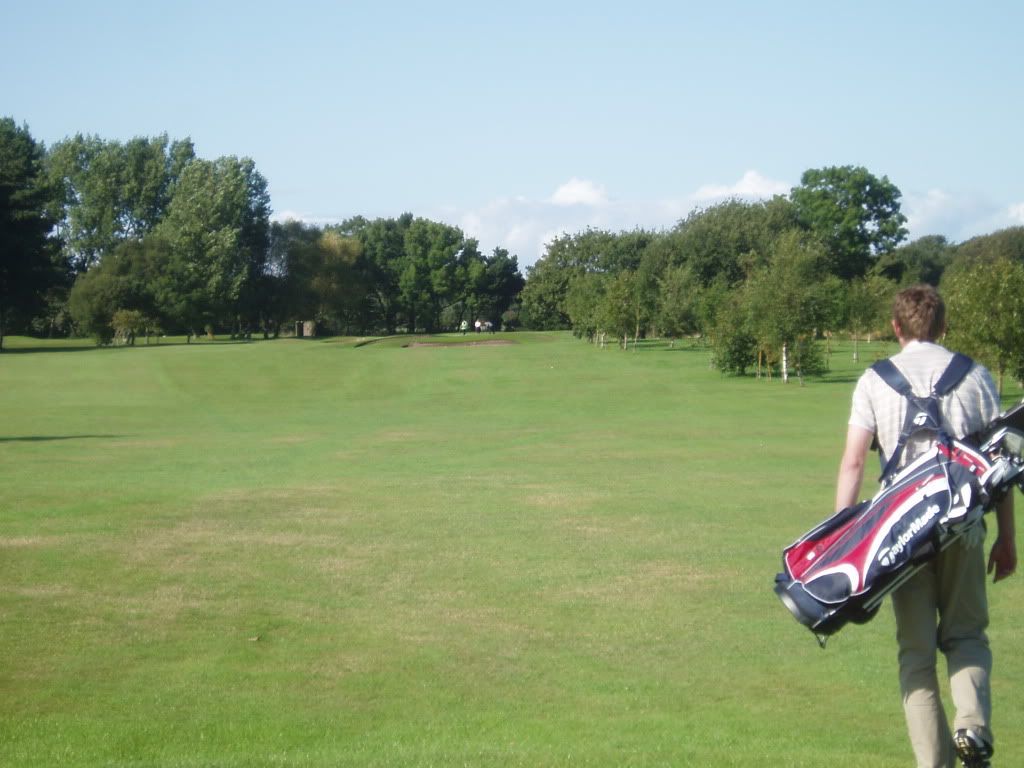
Trees have been planted on the right of the fairway, adding to the inland feel of the hole.
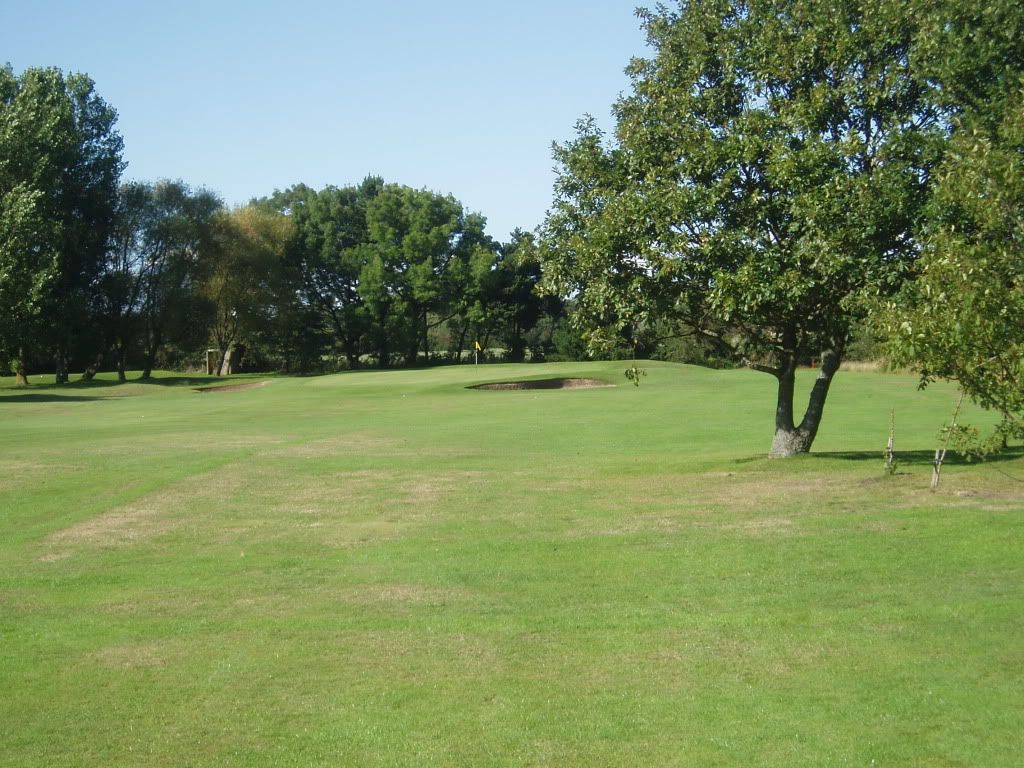
Bunkers guarding the entrance to the green favour an approach from the left side of the fairway.
14. 363 yards par 4.
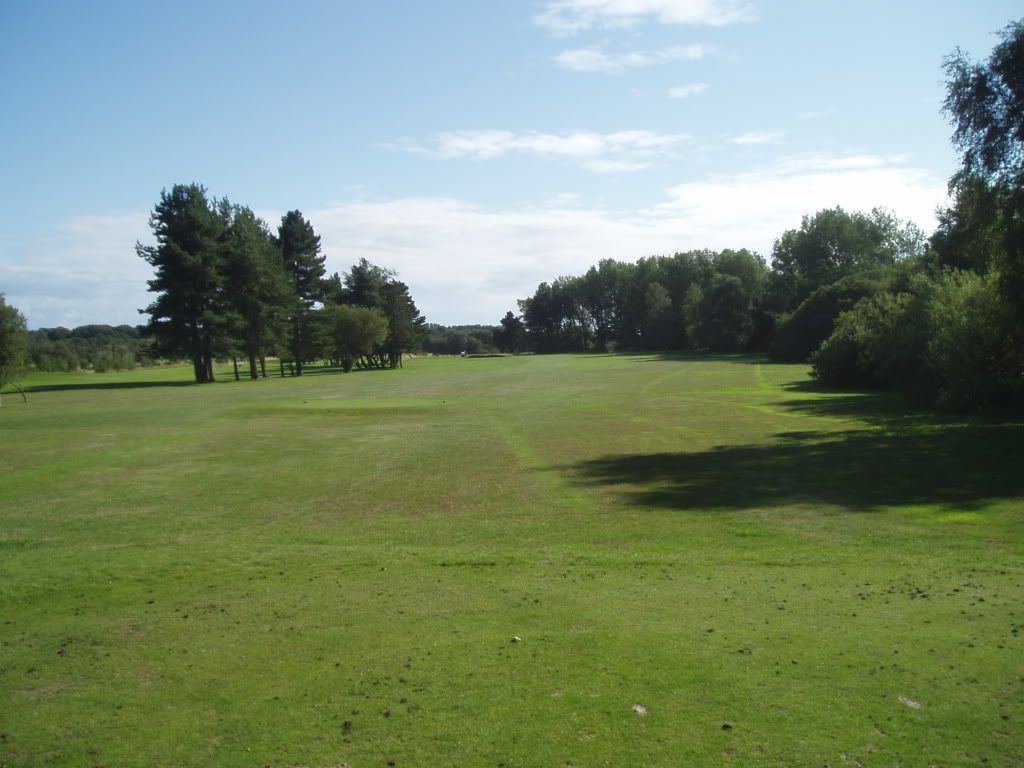
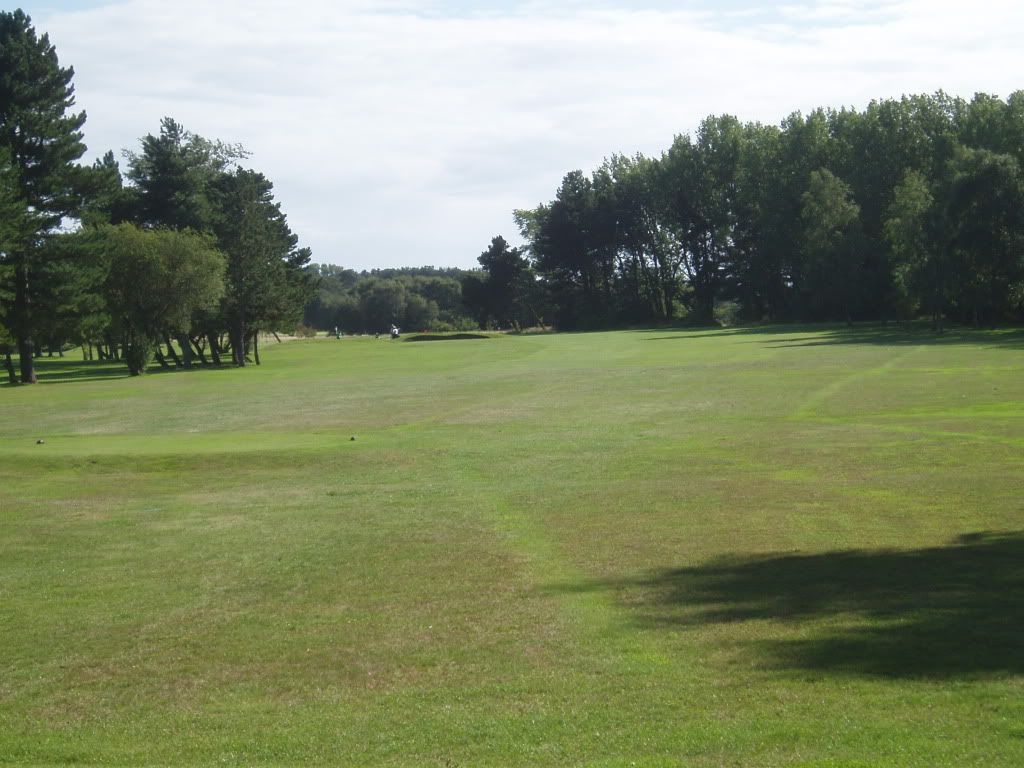
The only downhill tee shot of the round comes on this hole. A bunker 240 yards out might well be cleared by strong players, taking the left-hand dog leg out of play. The rest of us must keep to the right.
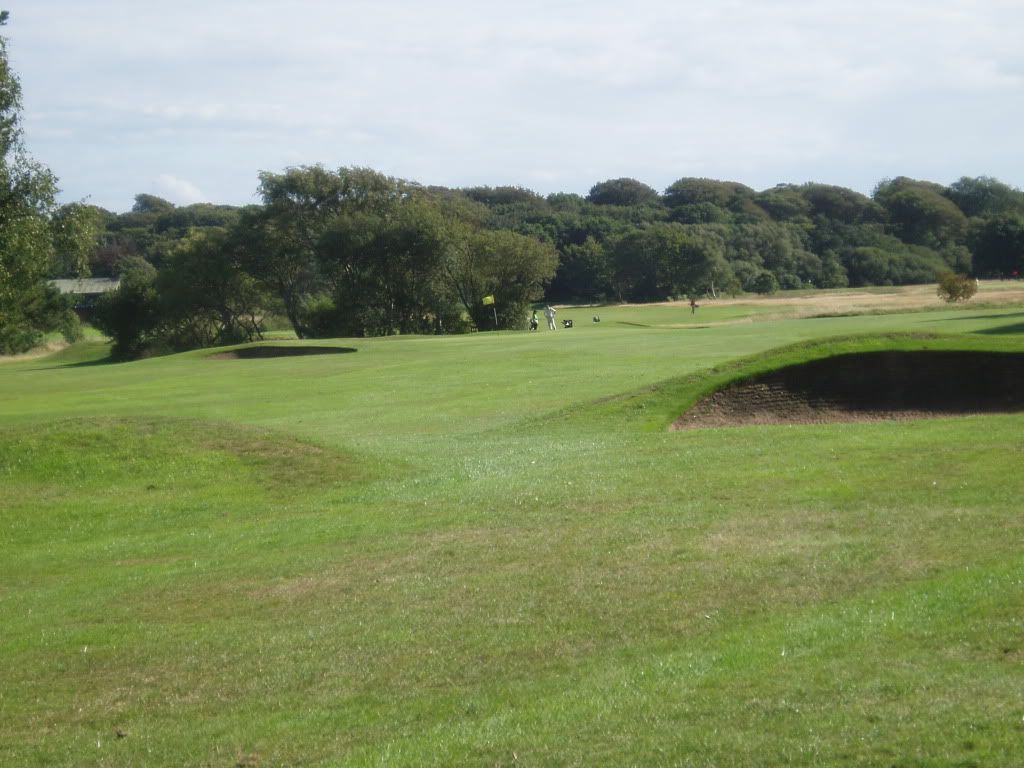
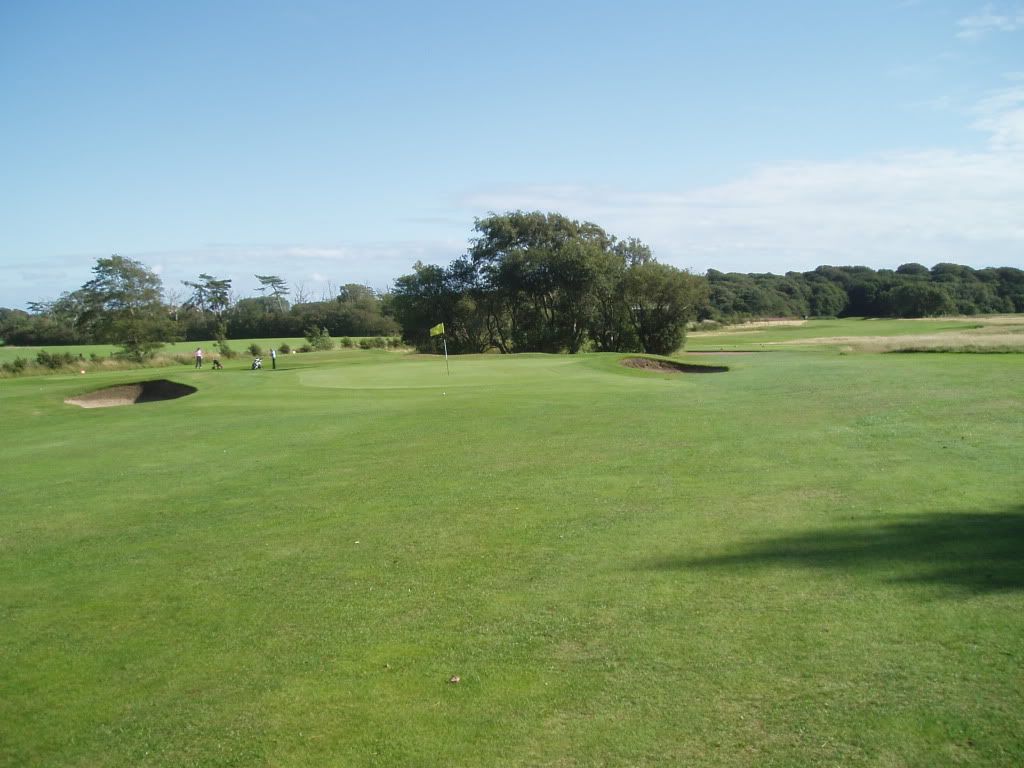
This green is joint deepest (with the 11th) and is notably narrow.
15. 499 yards par 5.
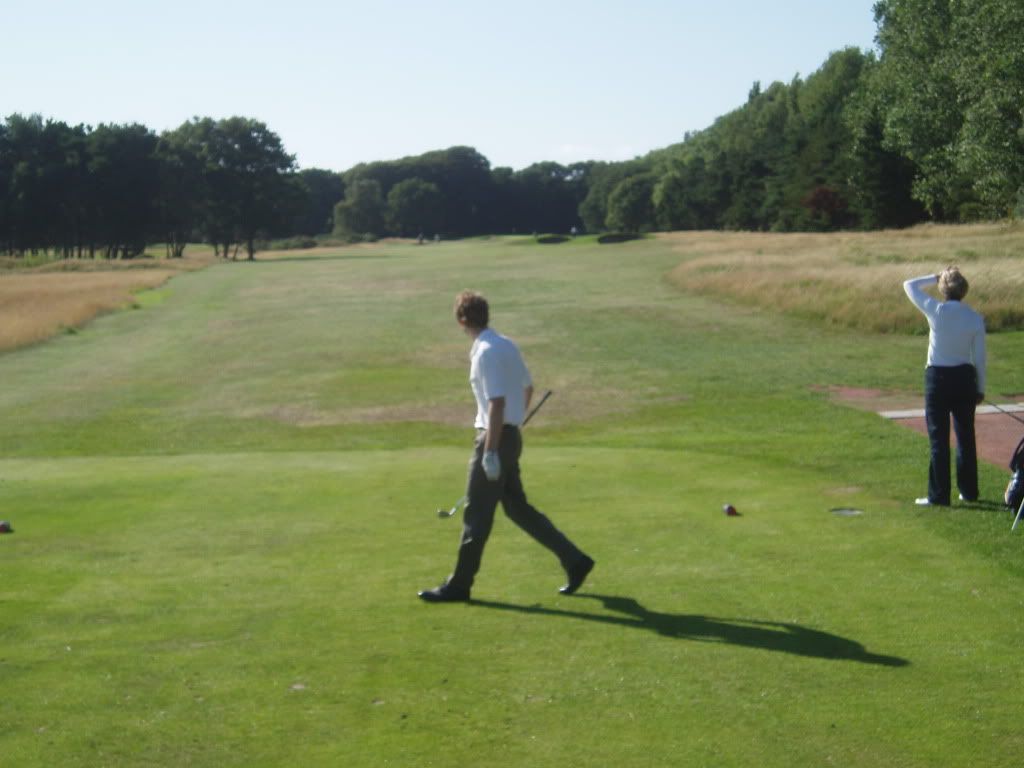
Returning to the flat ground this par five is not particularly long but it is rated Stroke Index 1. Stray off the fairway and there is a lot of trouble.
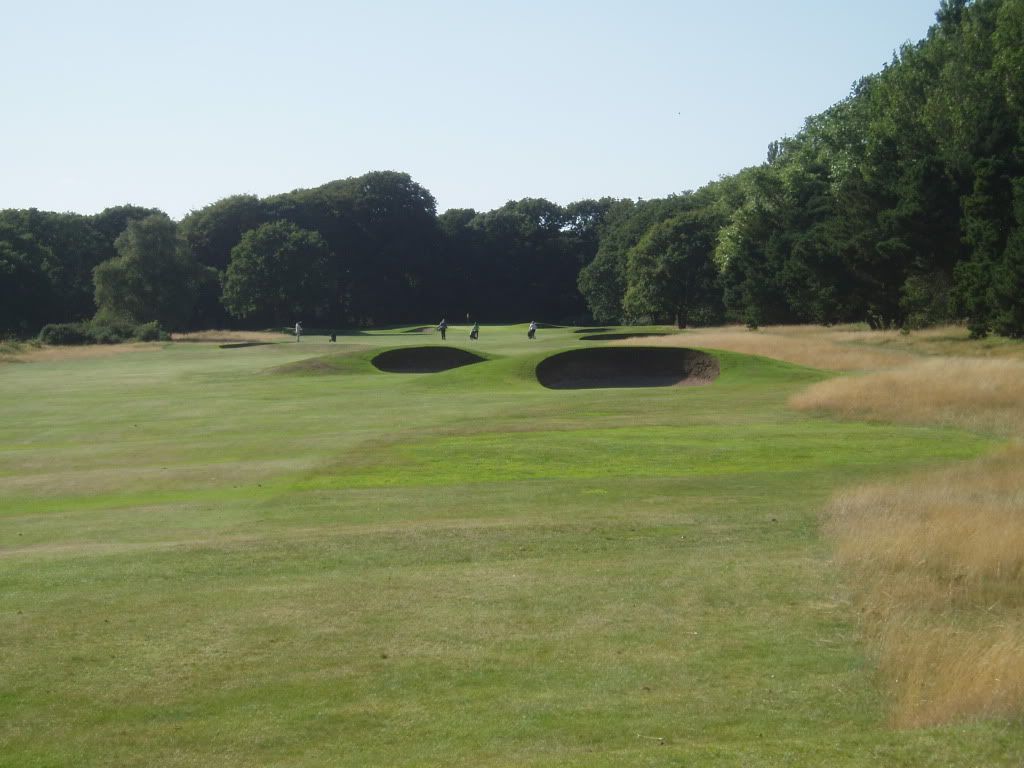
These bunkers seriously constrict the fairway at driving distance. Their outline is threateningly visible from afar.
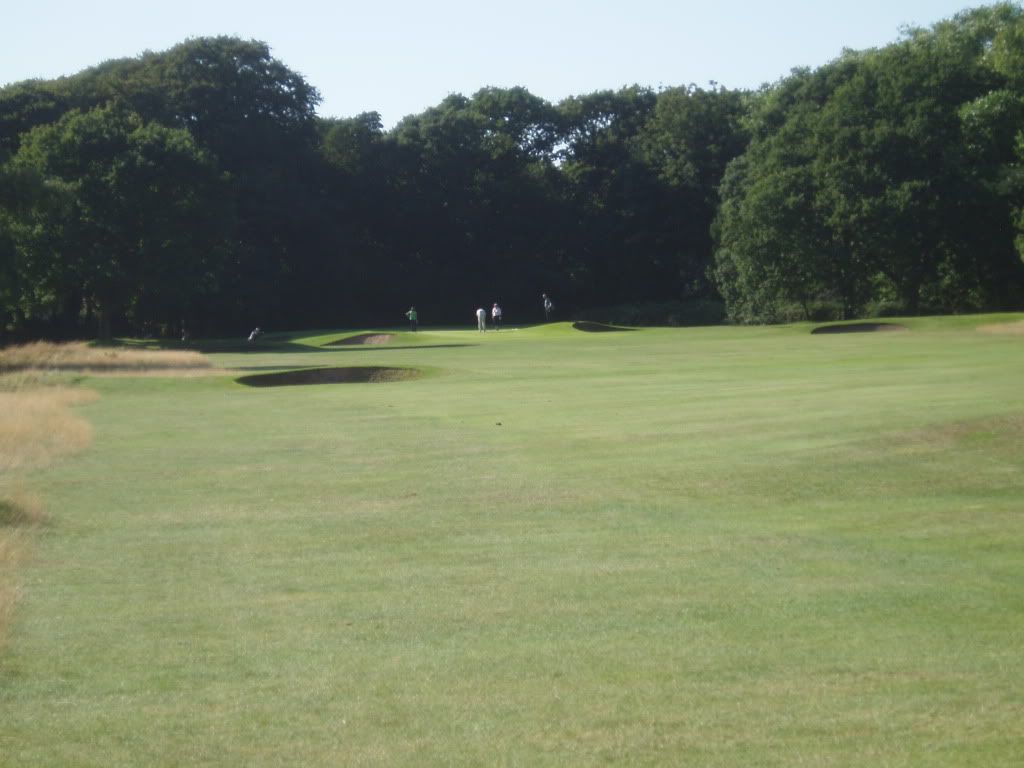
The approaches to the green are well guarded with bunkers….
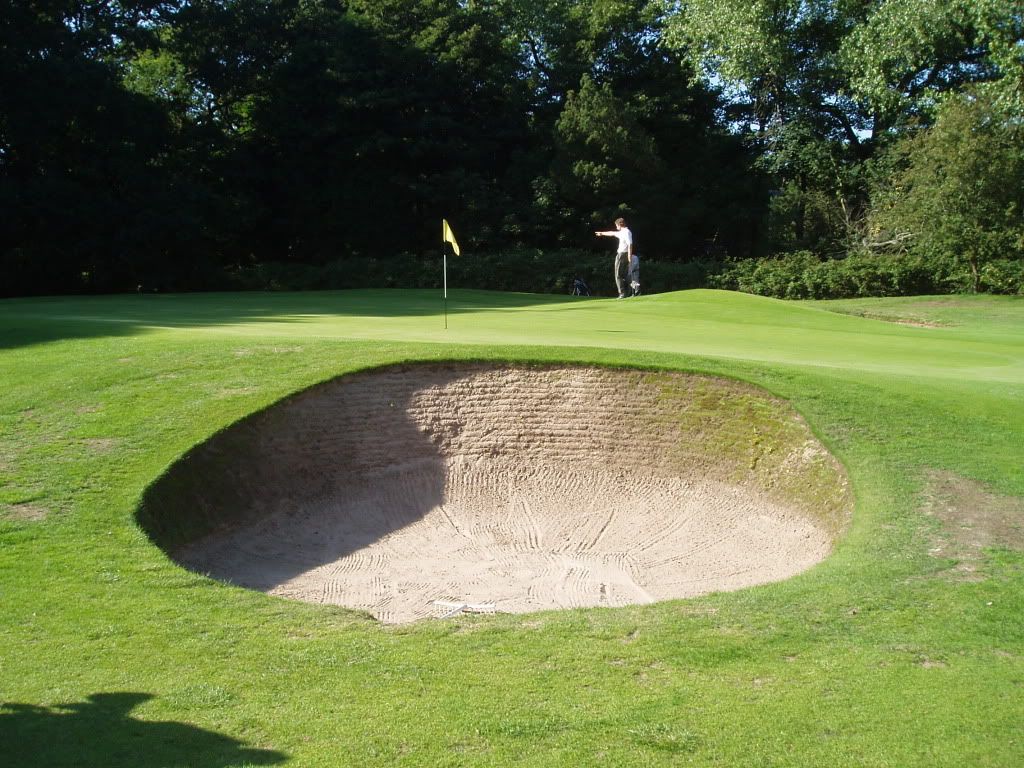
…. and they are deep.
16. 474 yards par 4.
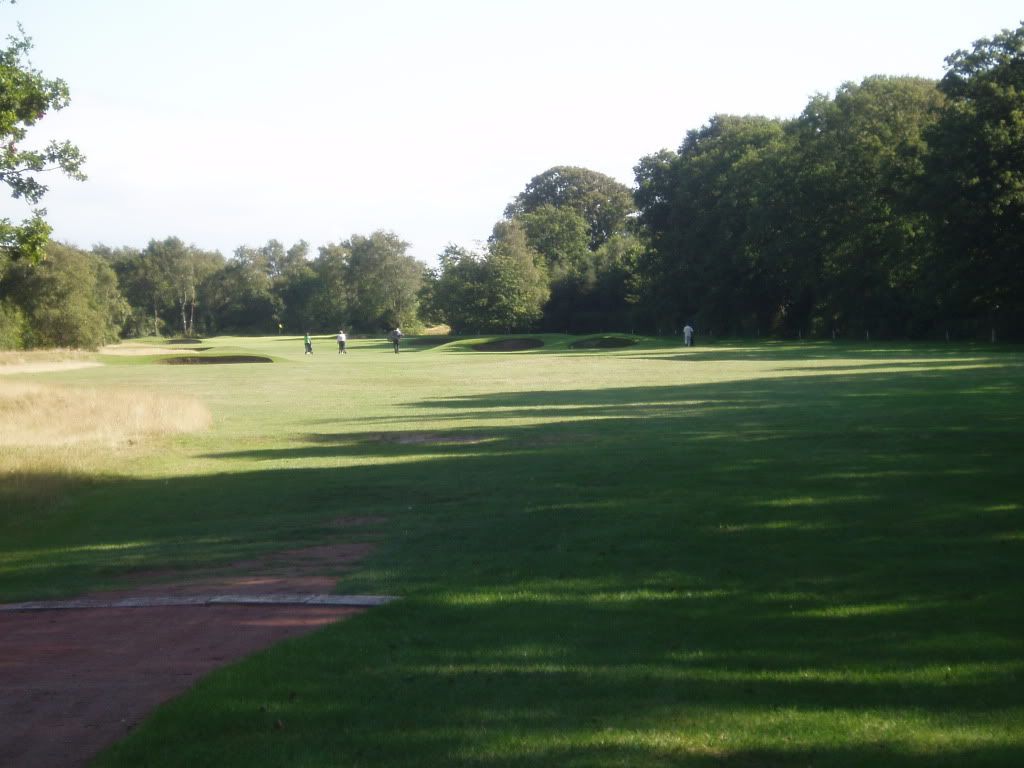
This is a big bruiser of a hole, playing as a par four at 499 yards from the blue tee. The bunker on the left is 226 yards out, while those on the right are 285 yards from the back tee.
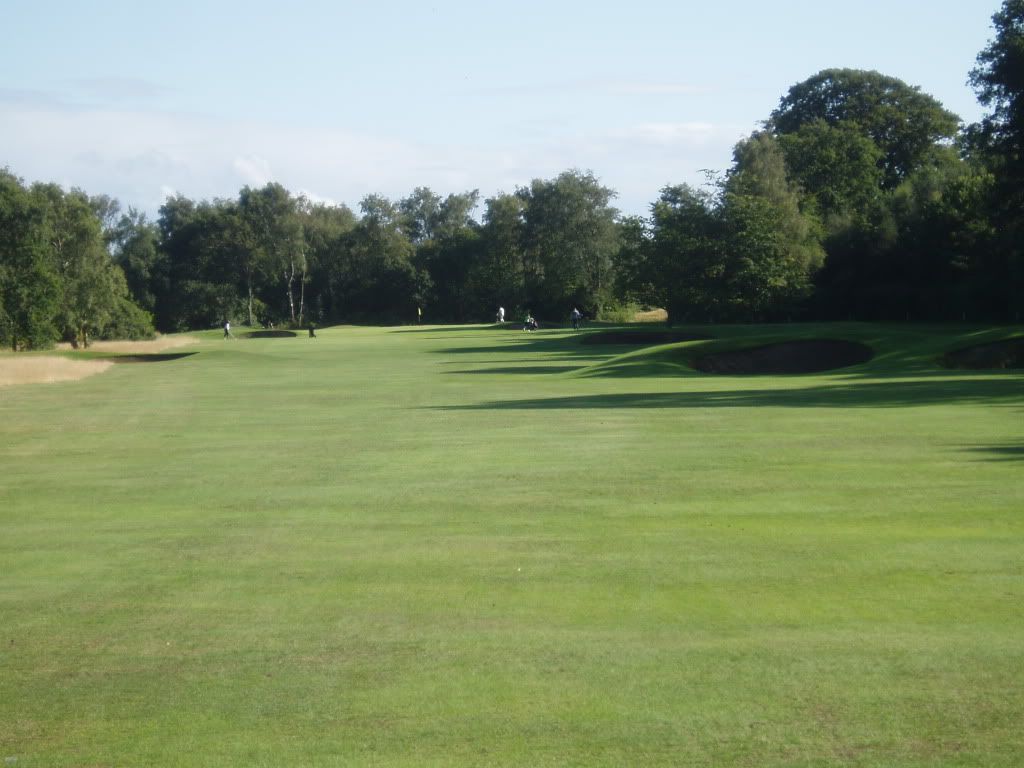
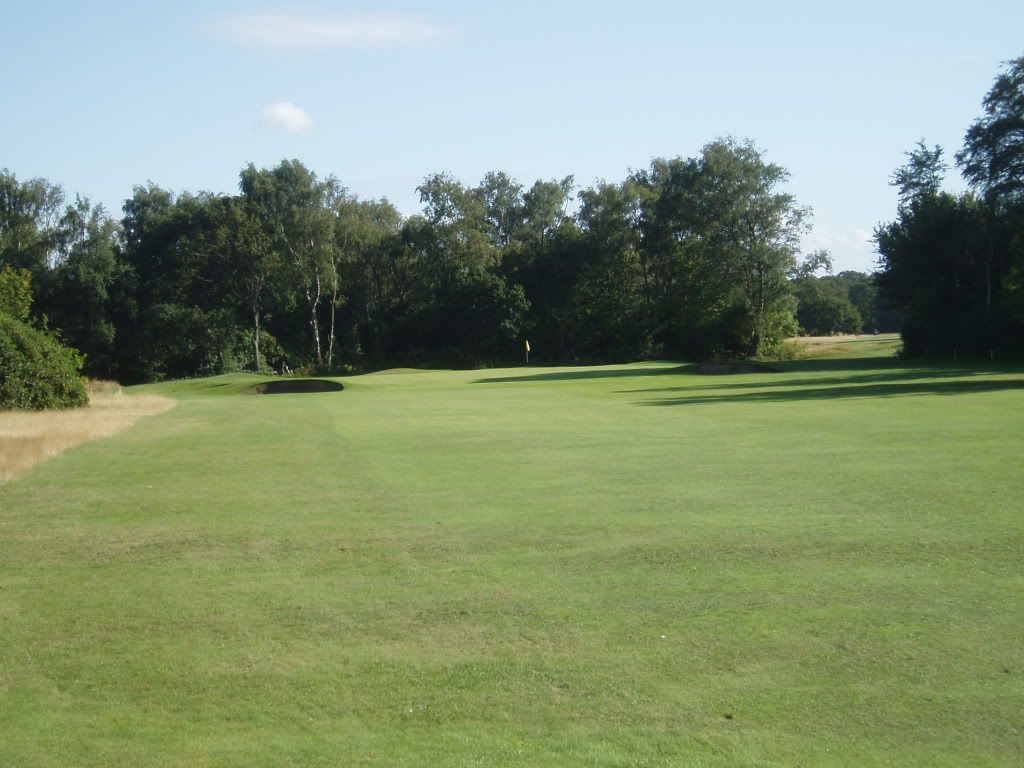
With further bunkers and plentiful trees either side of the fairway straightness is of the essence.
17. 158 yards par 3.
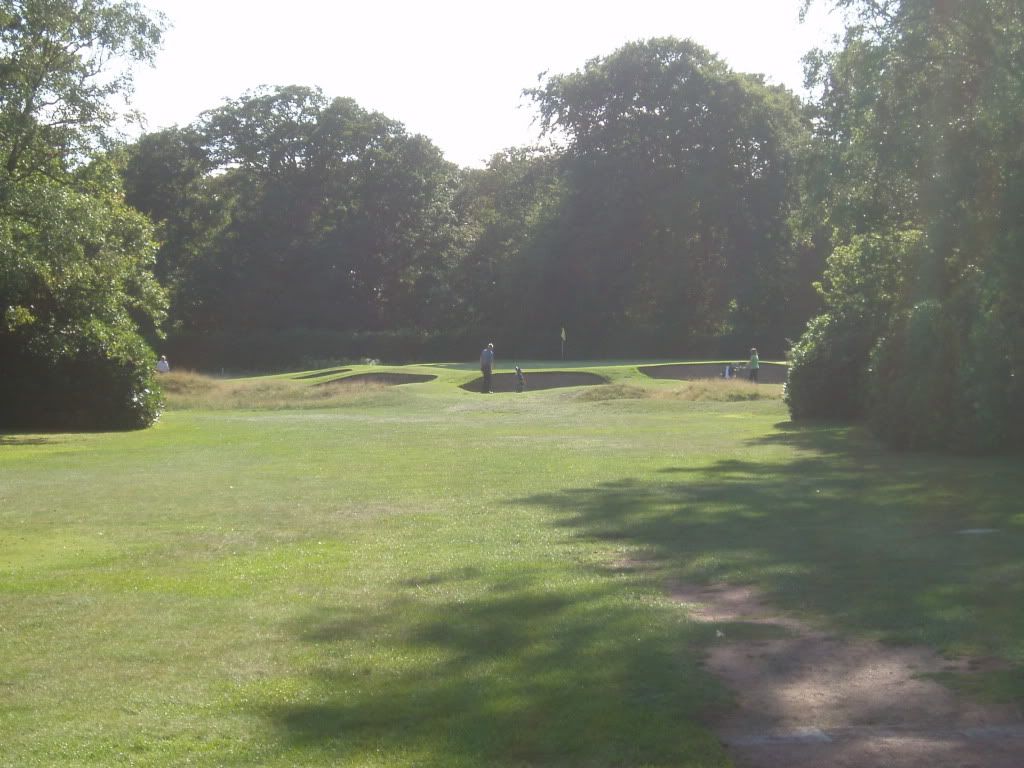
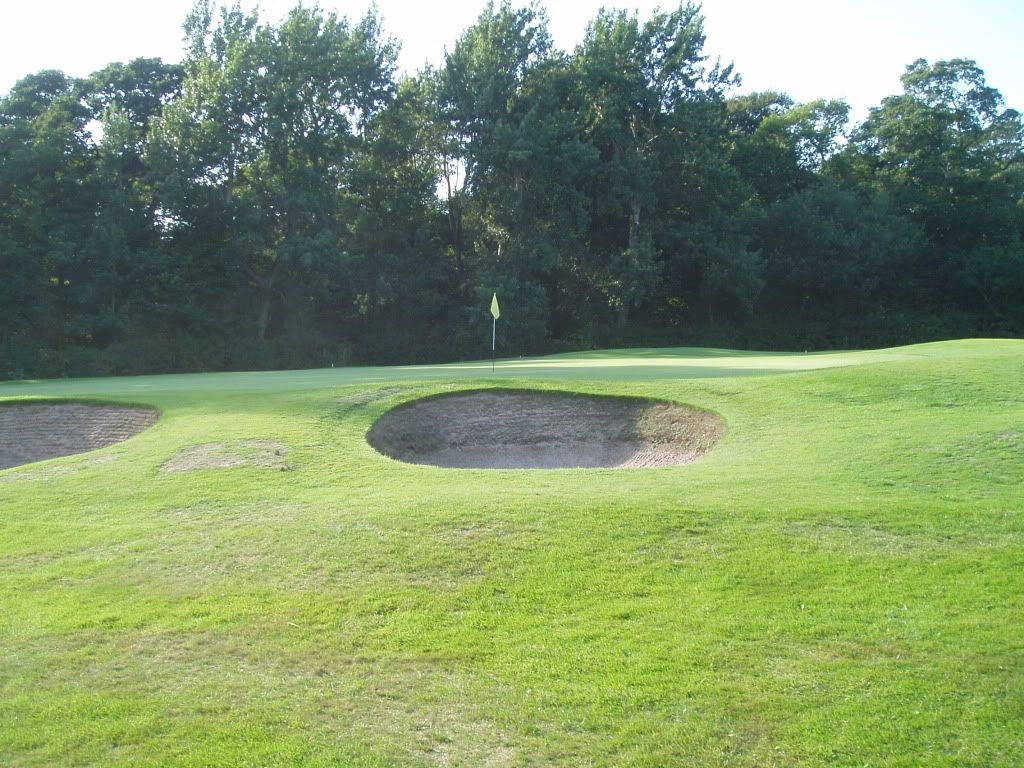
A very tightly guarded target, this raised green features a horseshoe of eight bunkers to both sides and the front. The tee is well sheltered from the wind. The ball’s flight is not.
18. 513 yards par 5.
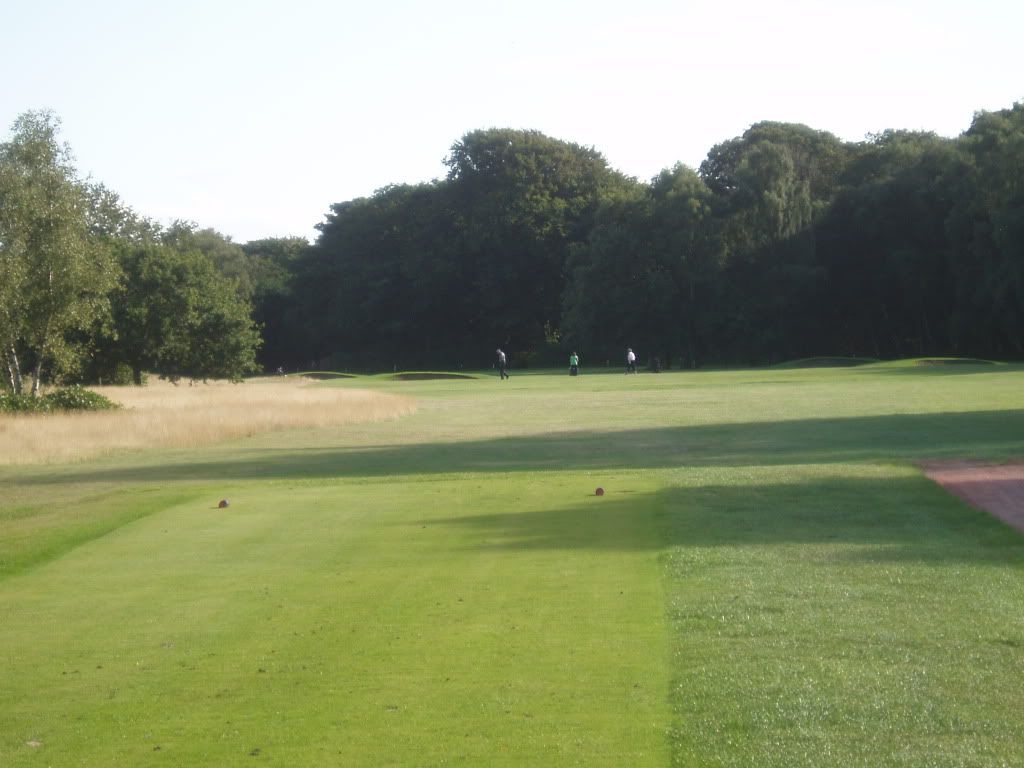
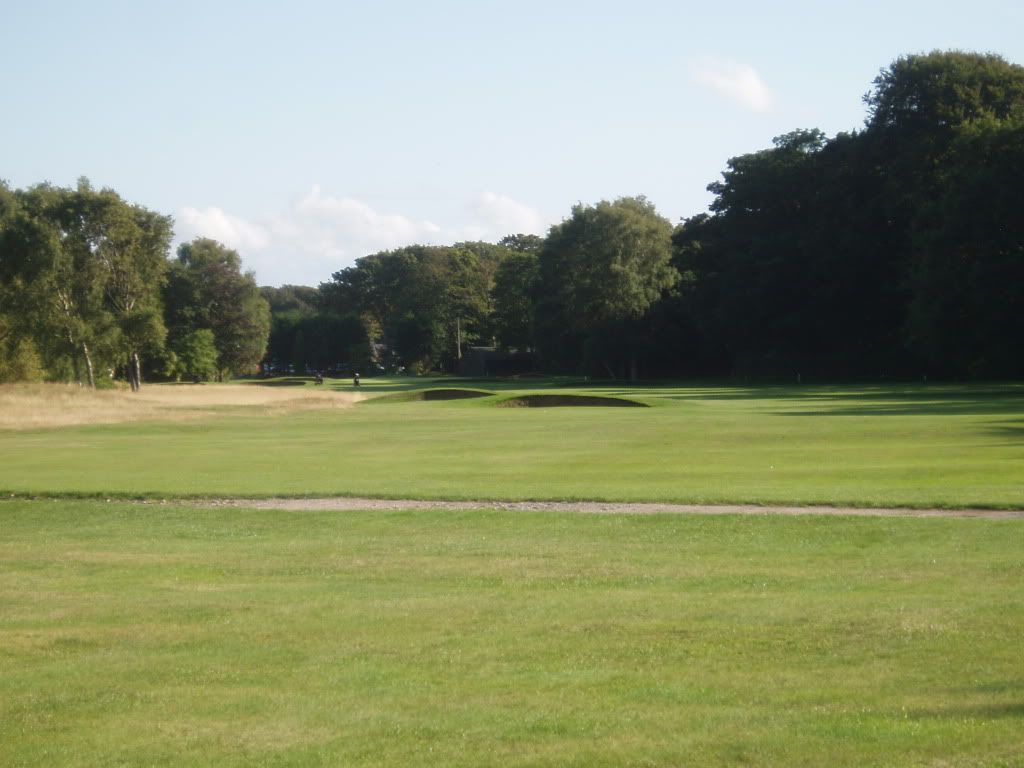
A series of bunkers constrict the fairway at driving distance just as the fairway begins a move to the left.
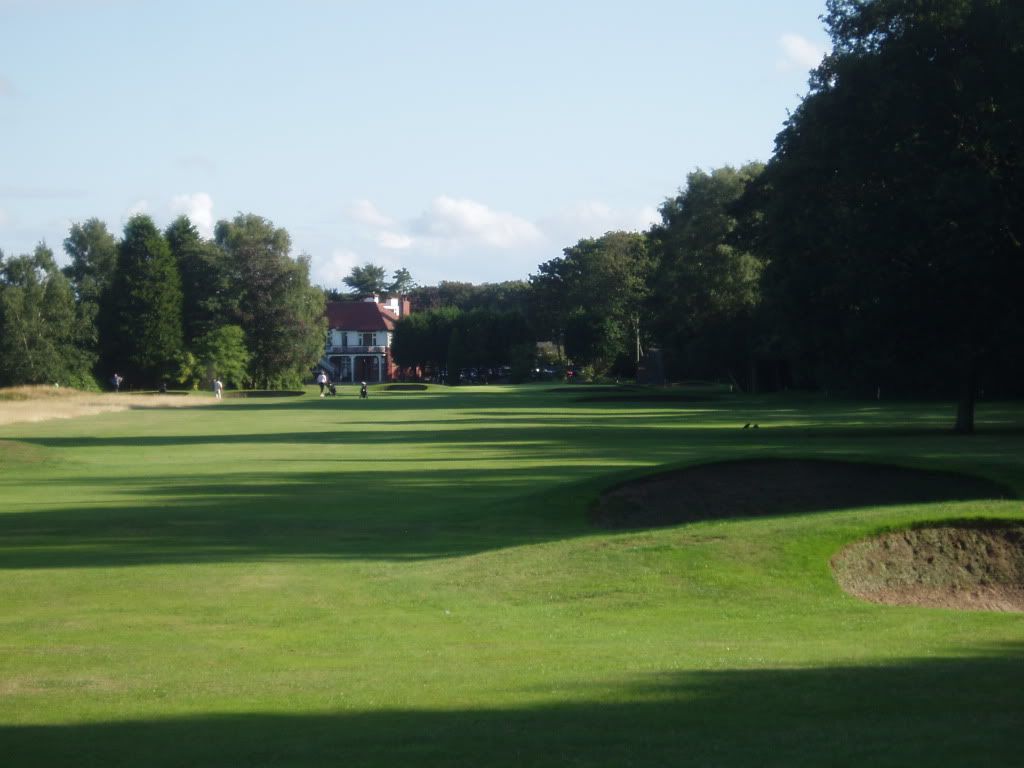
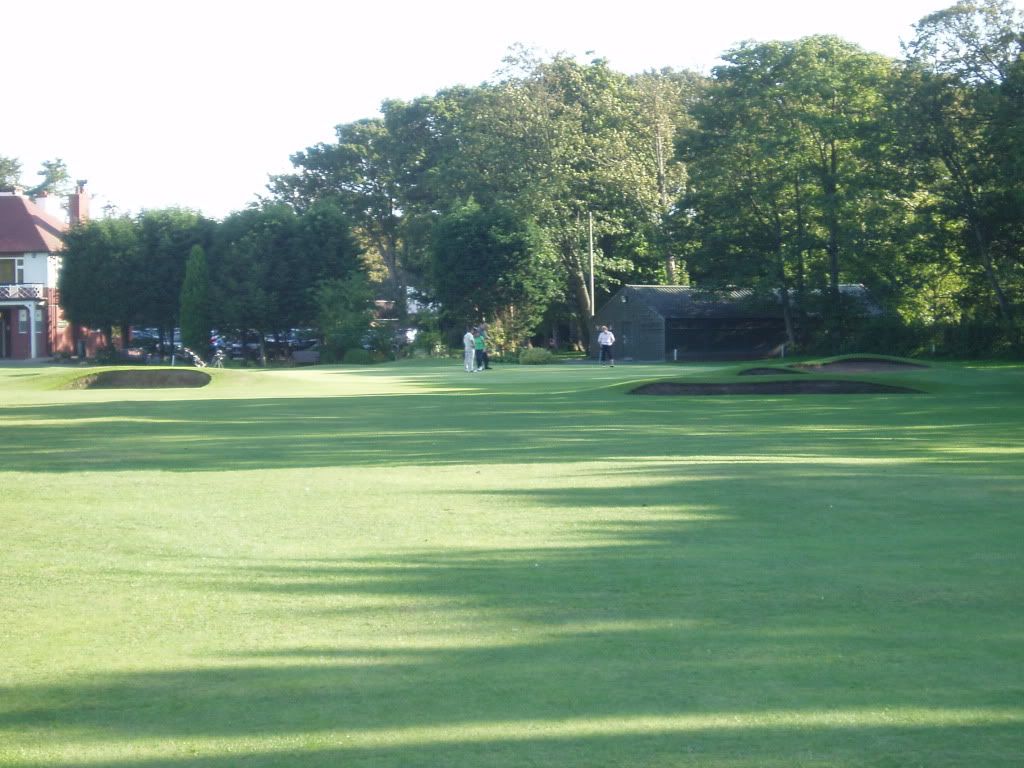
Rhododendrons, trees, bunkers and out of bounds reinforce the narrowness over the final stages of this finishing hole. You can’t foozle your way round this course!